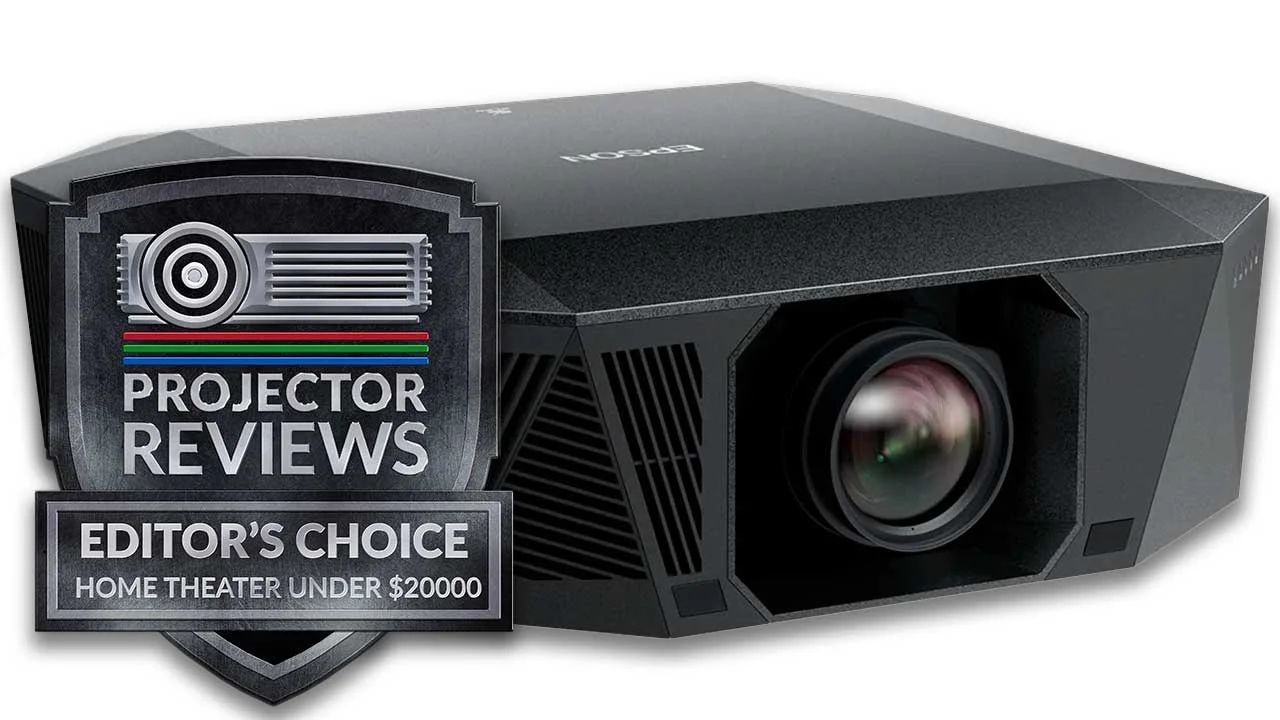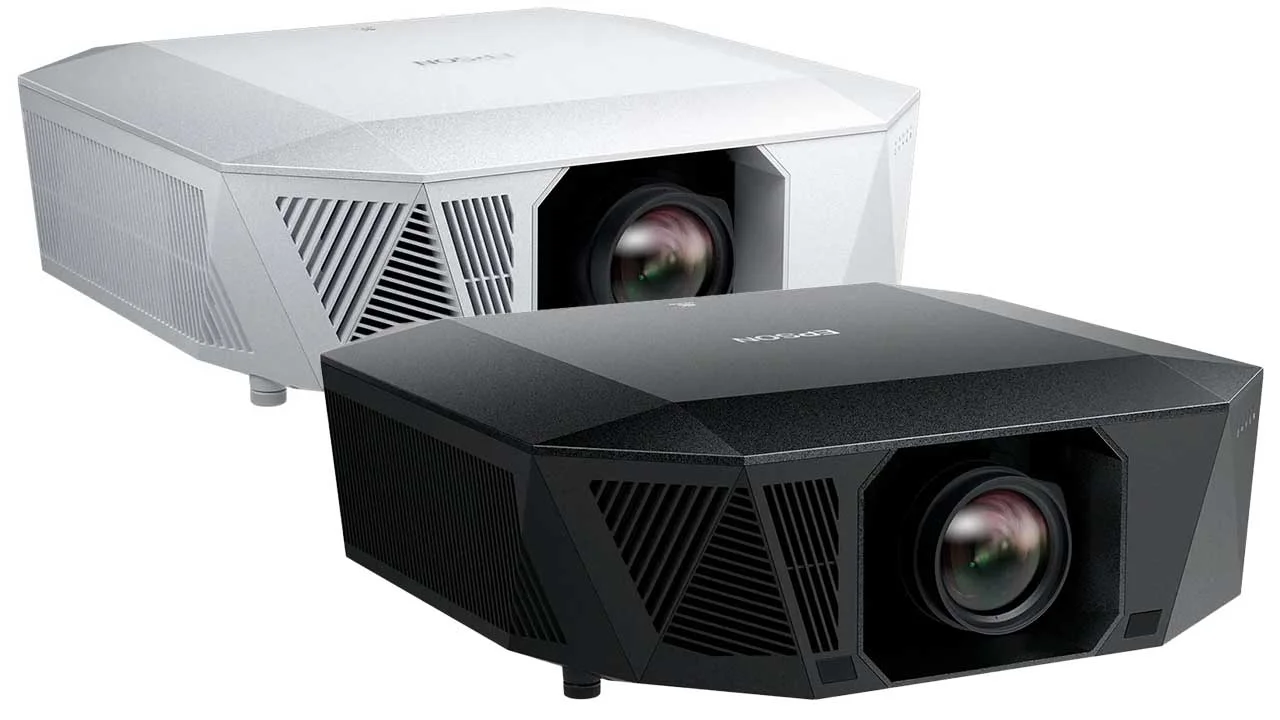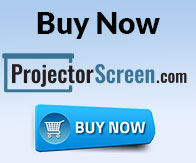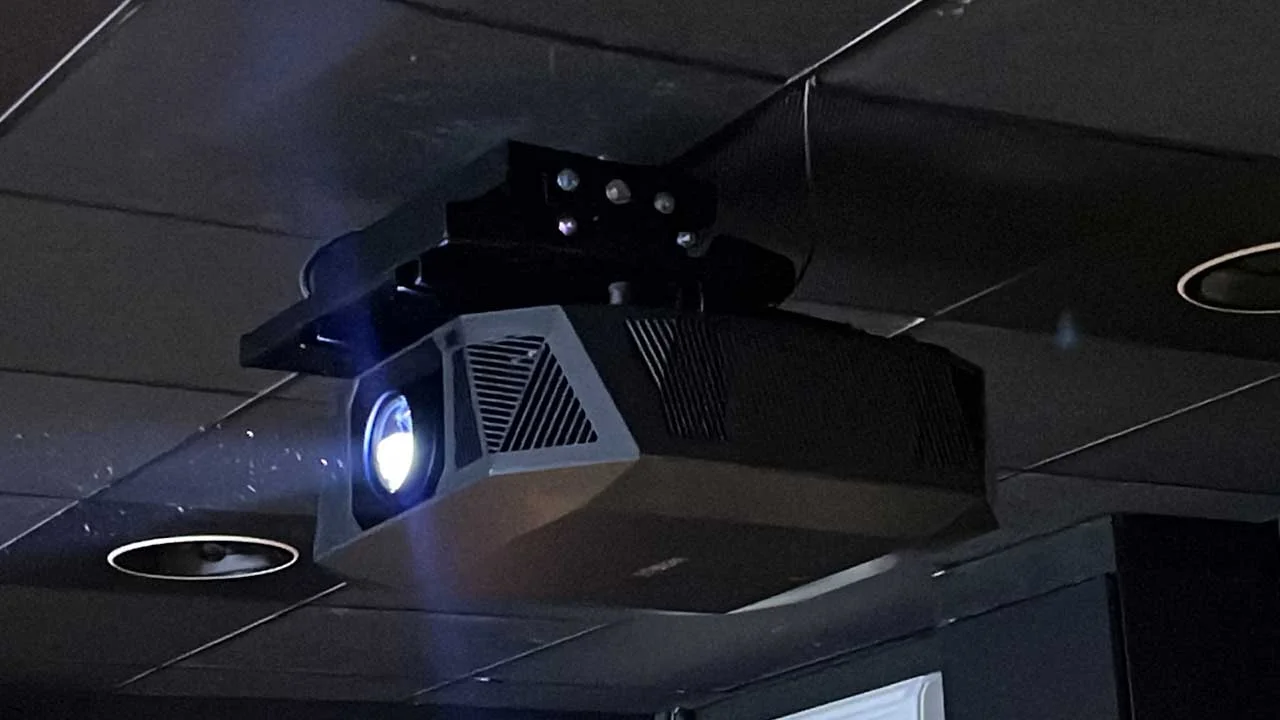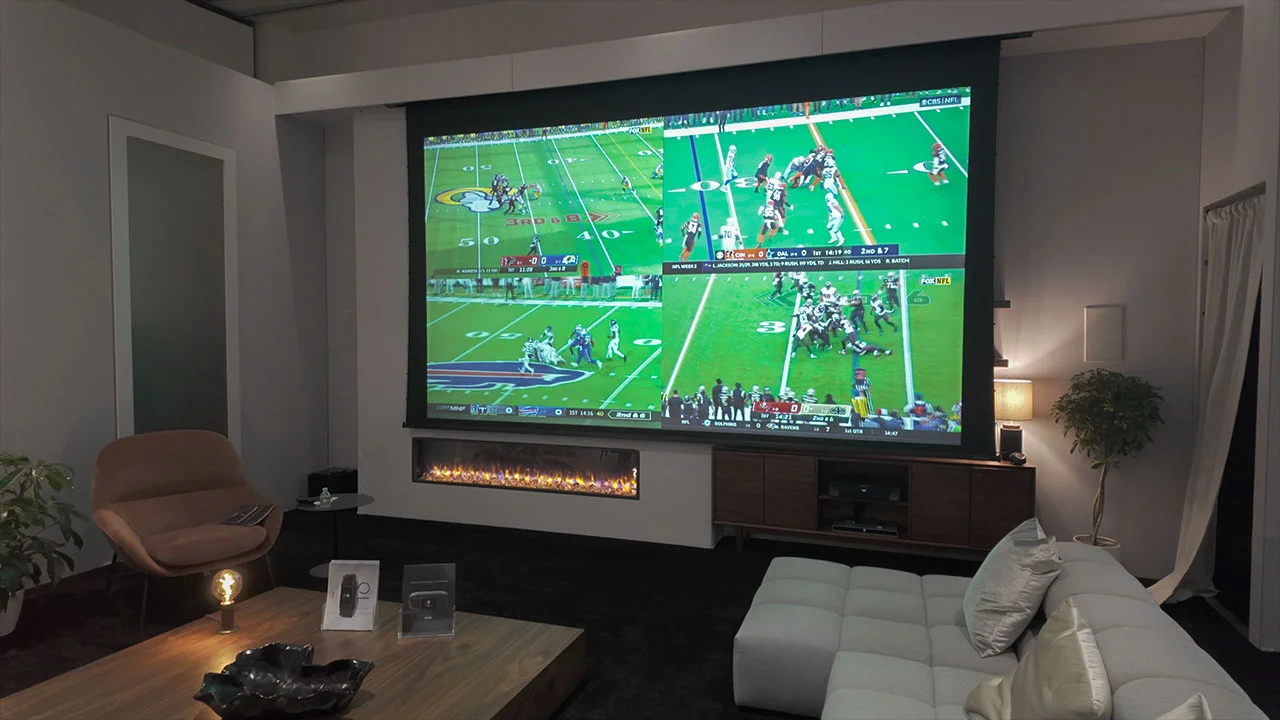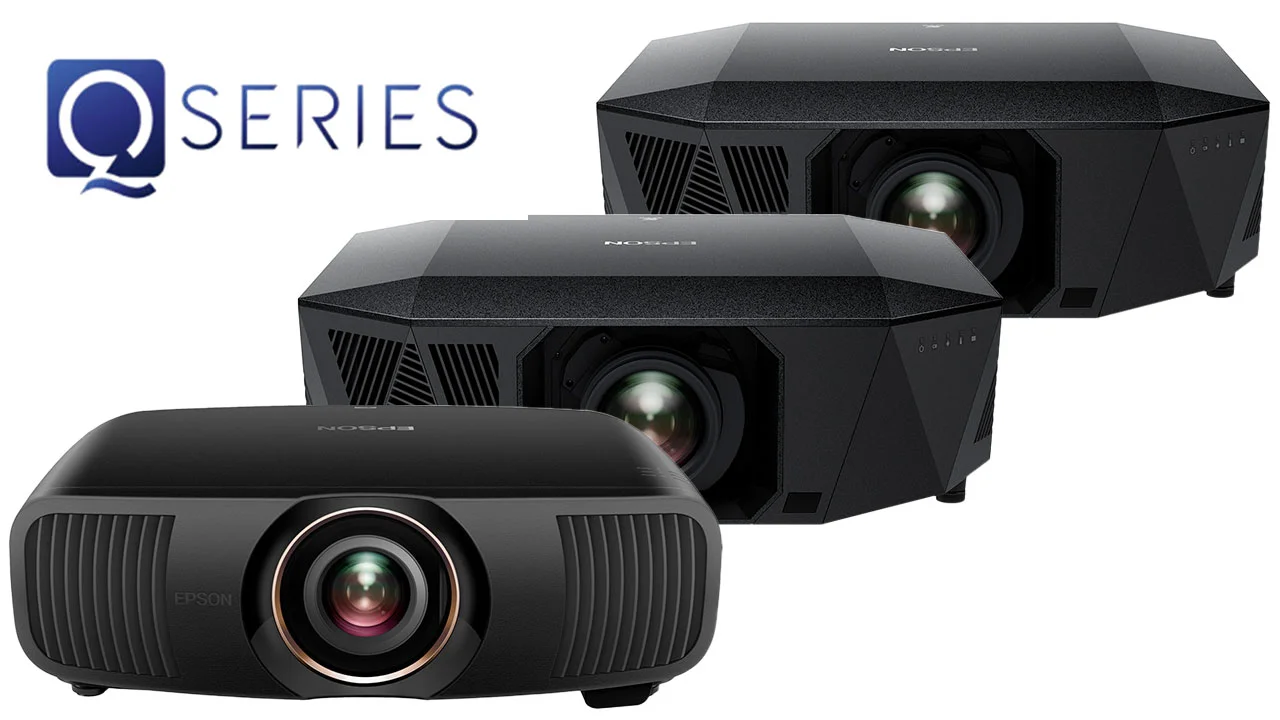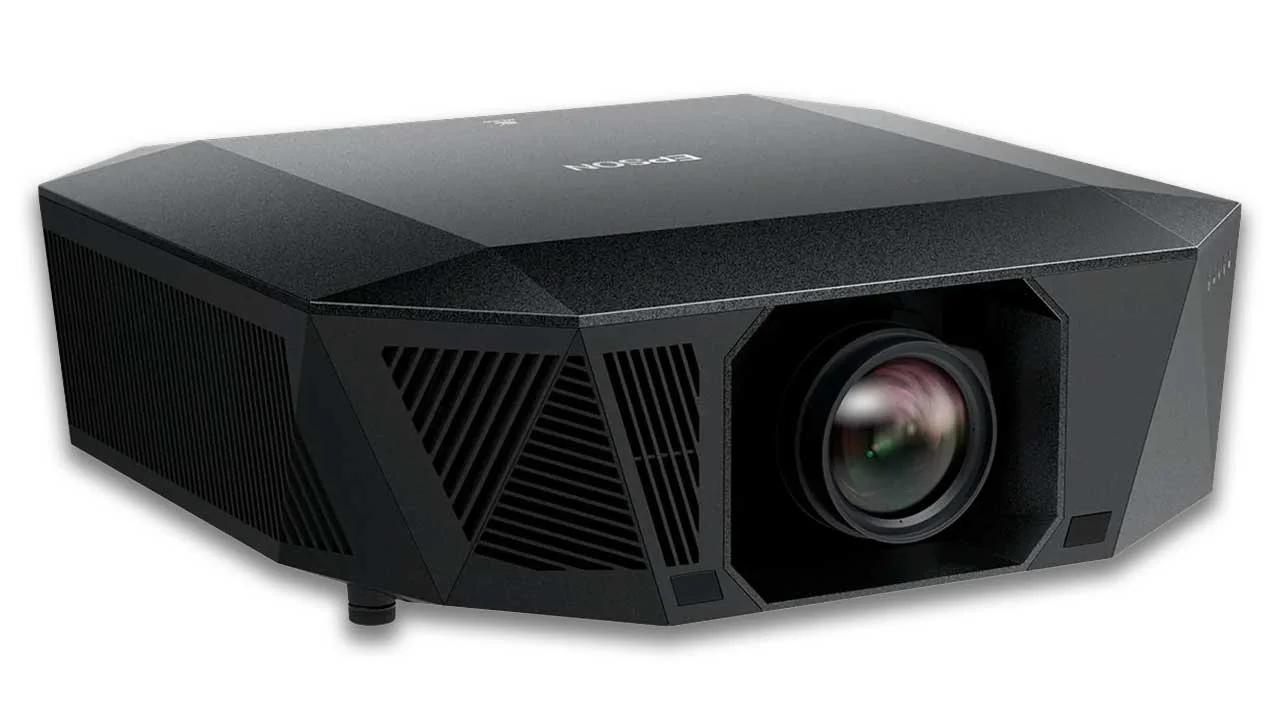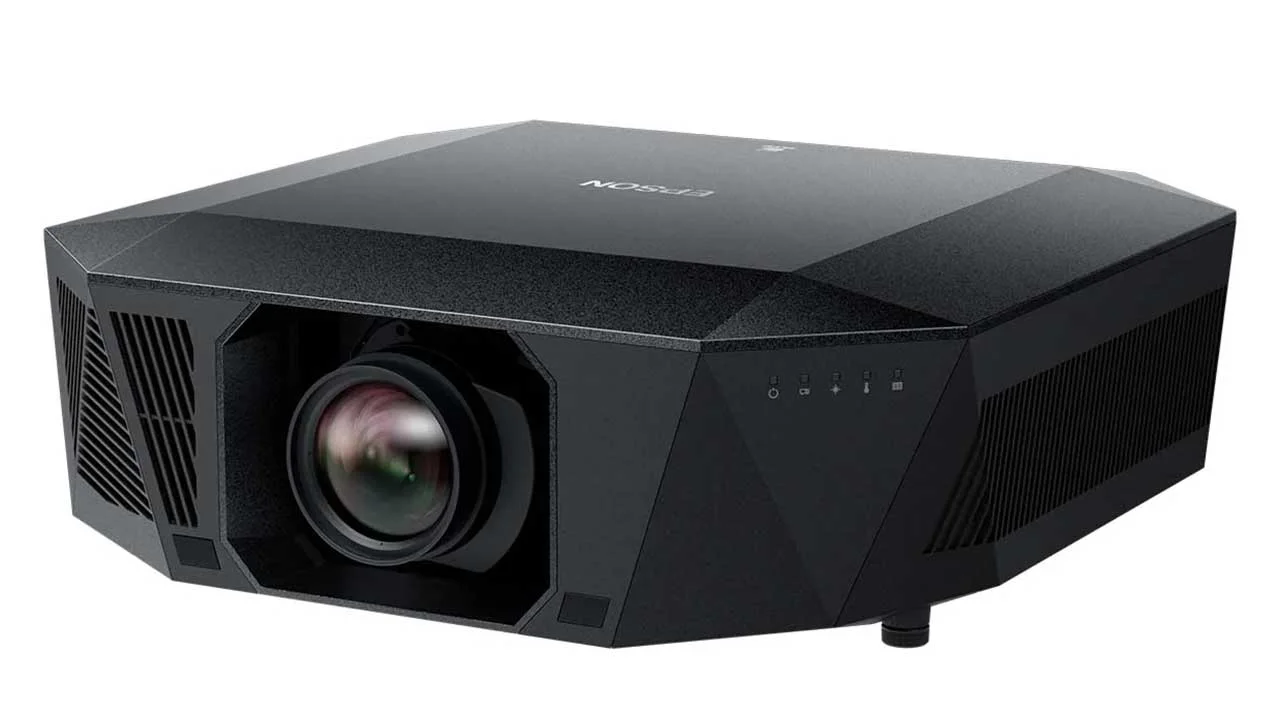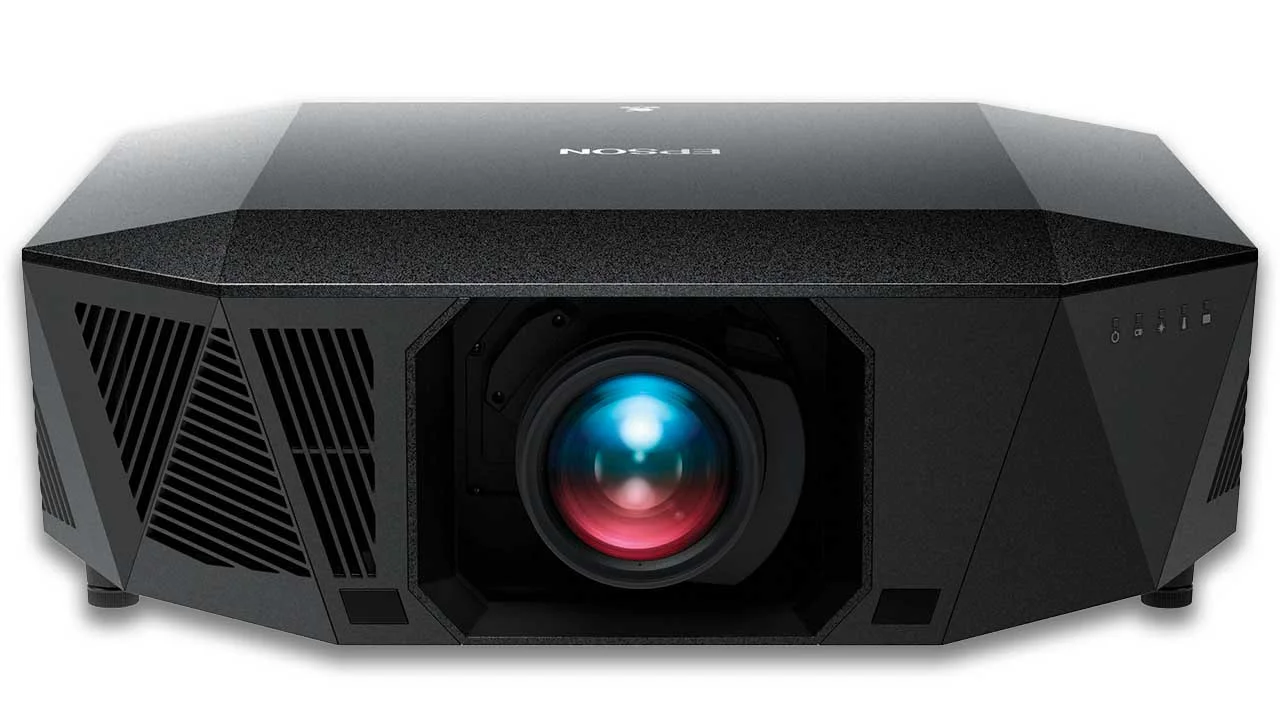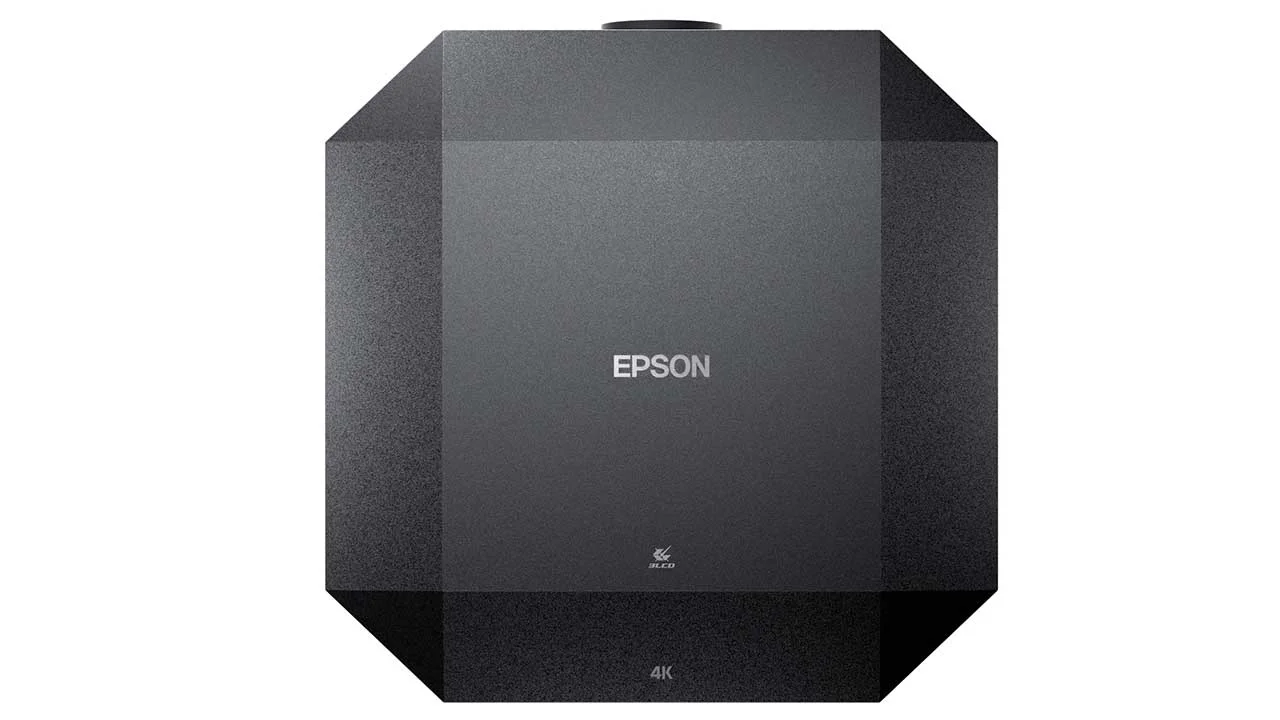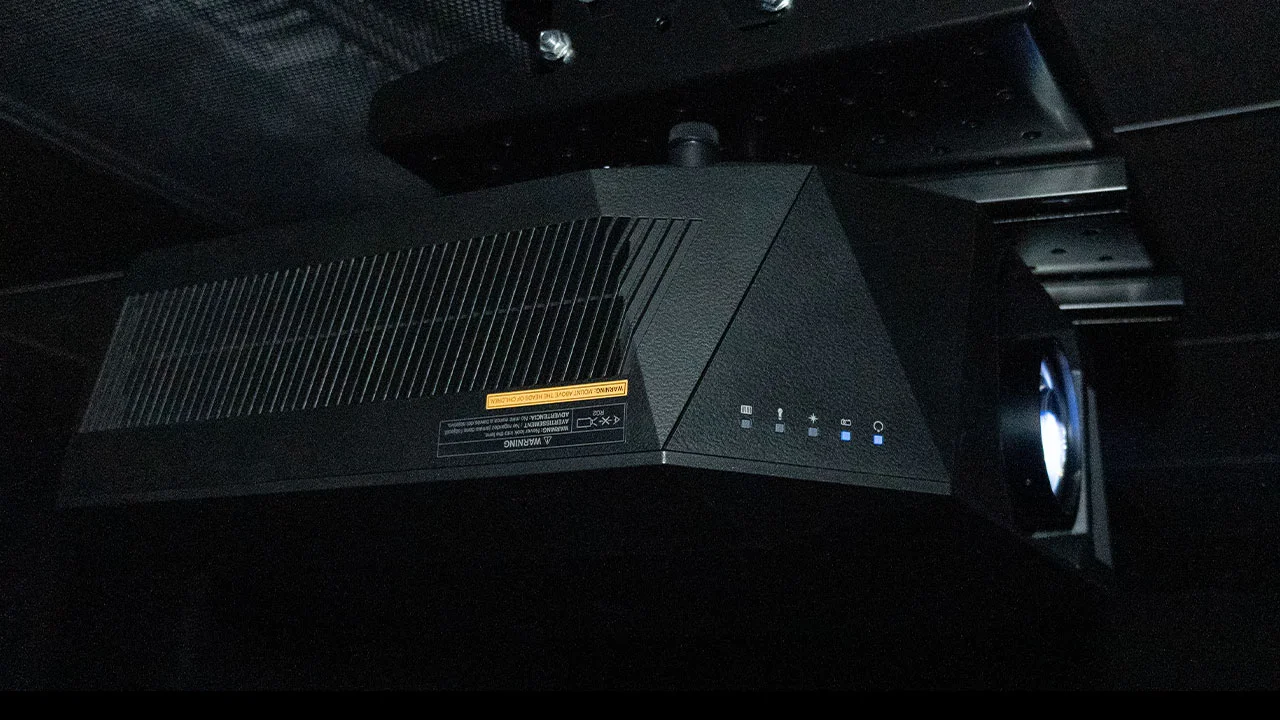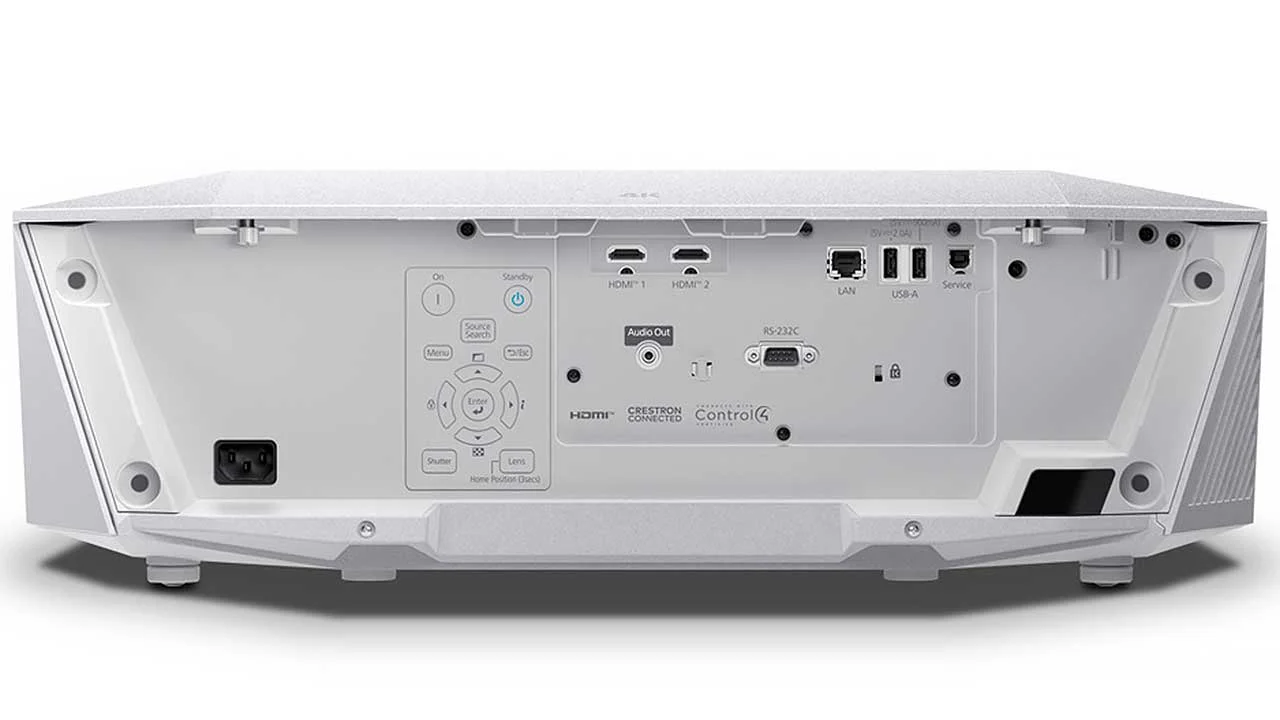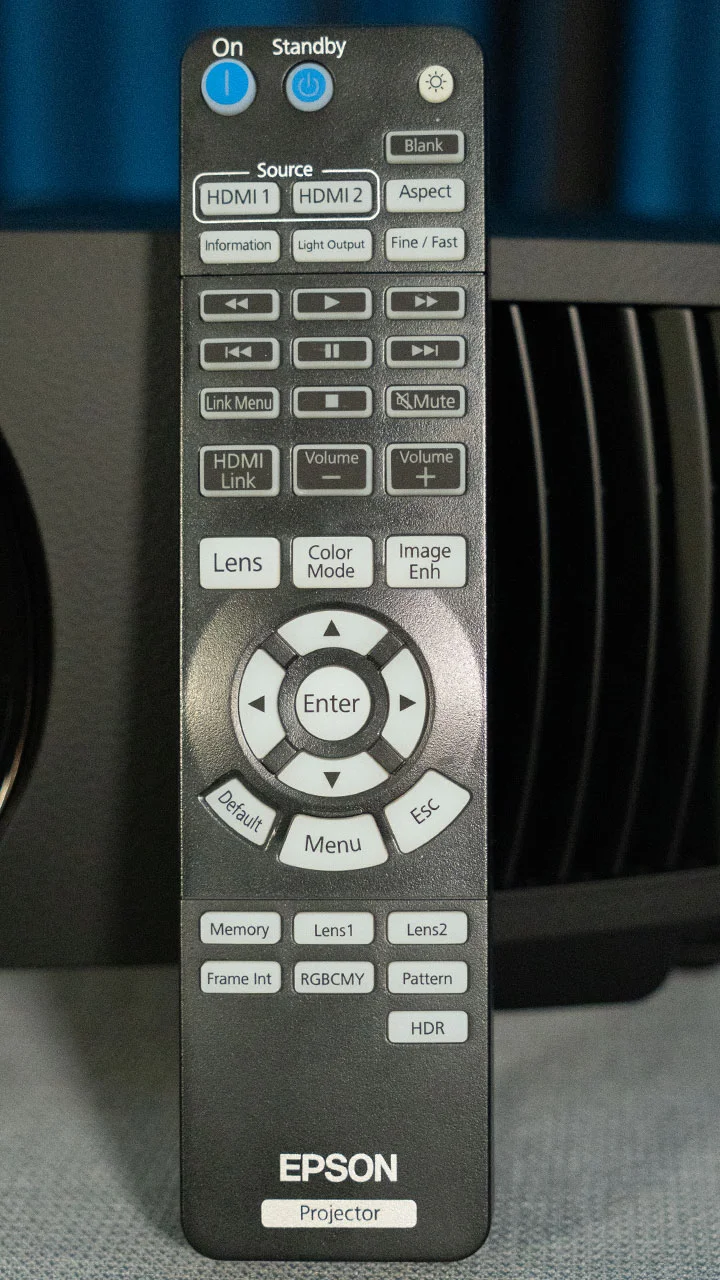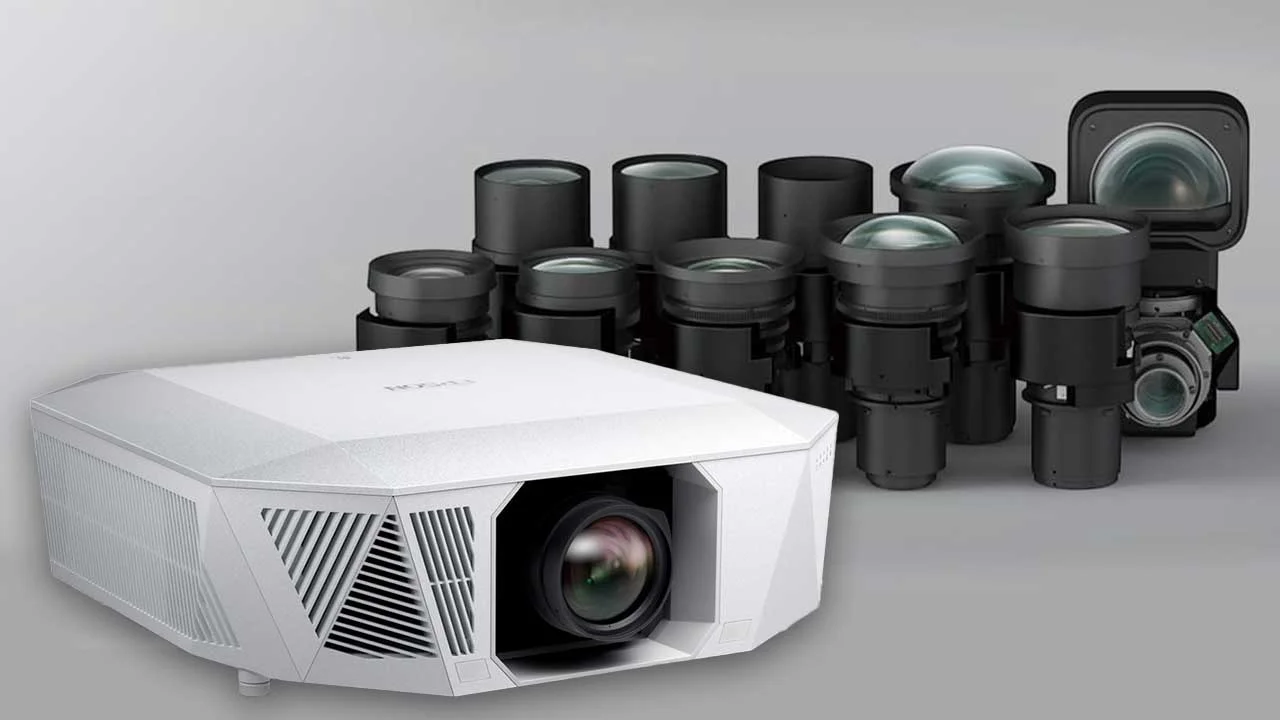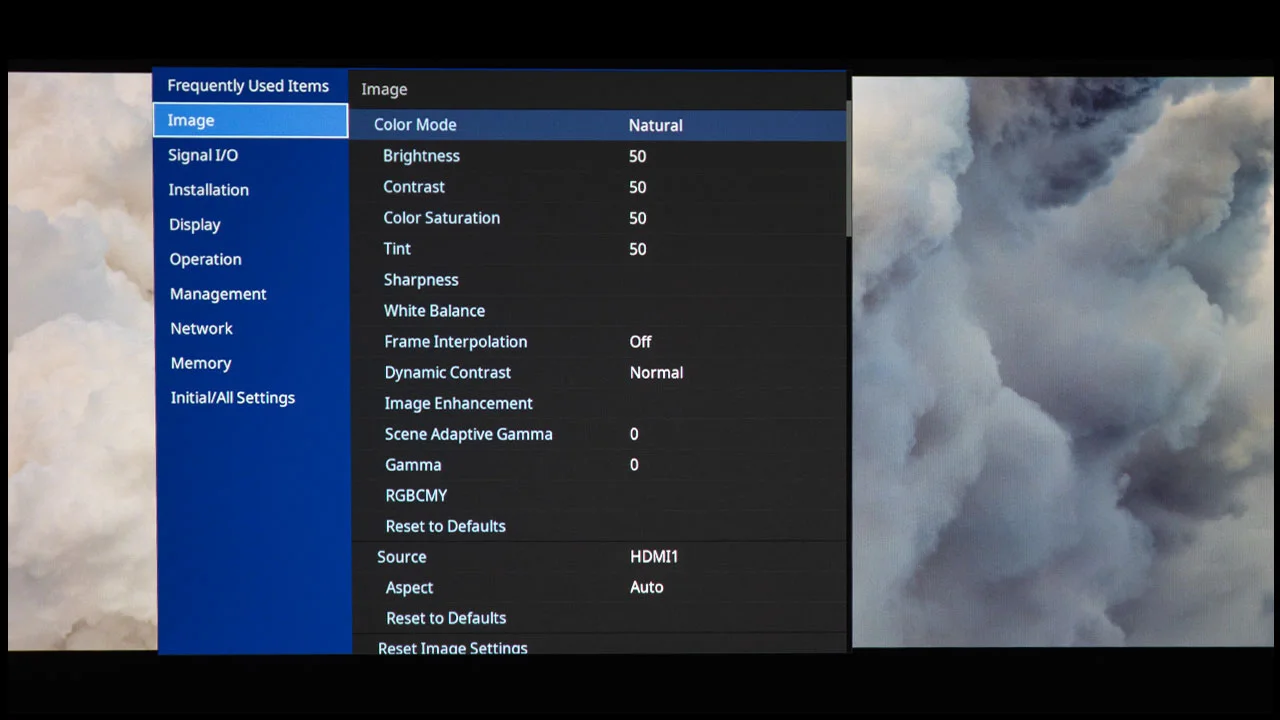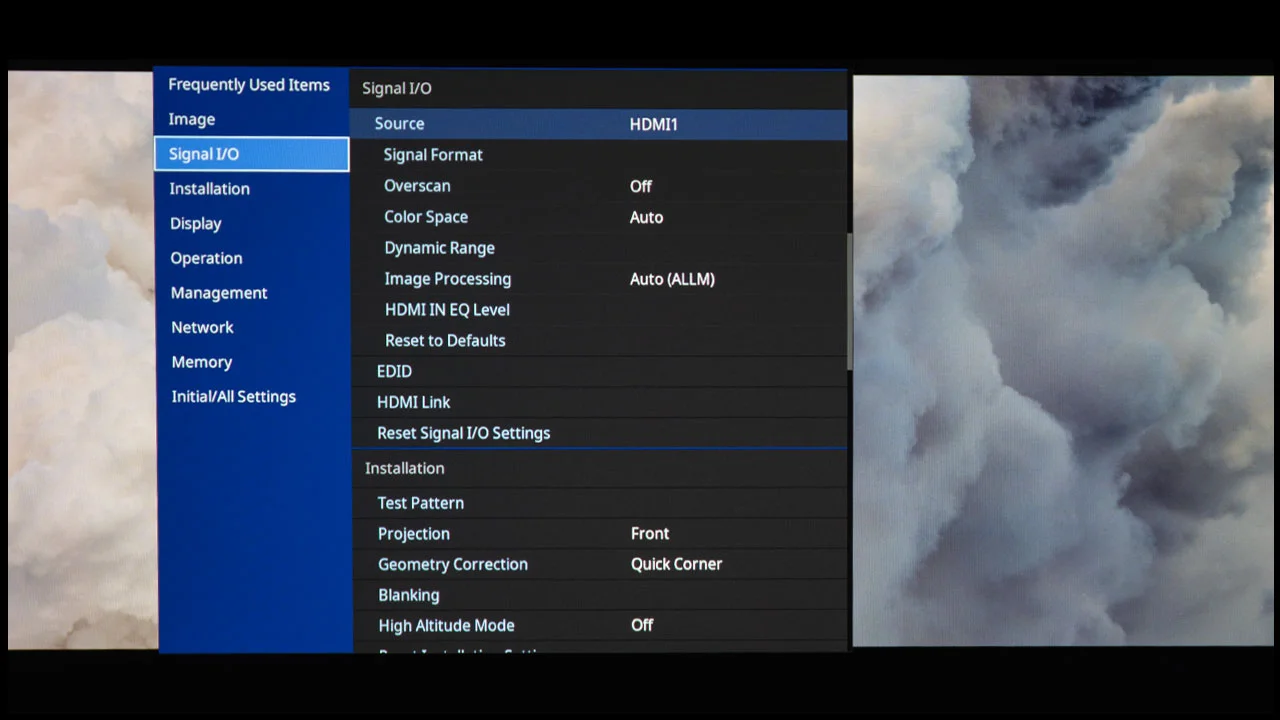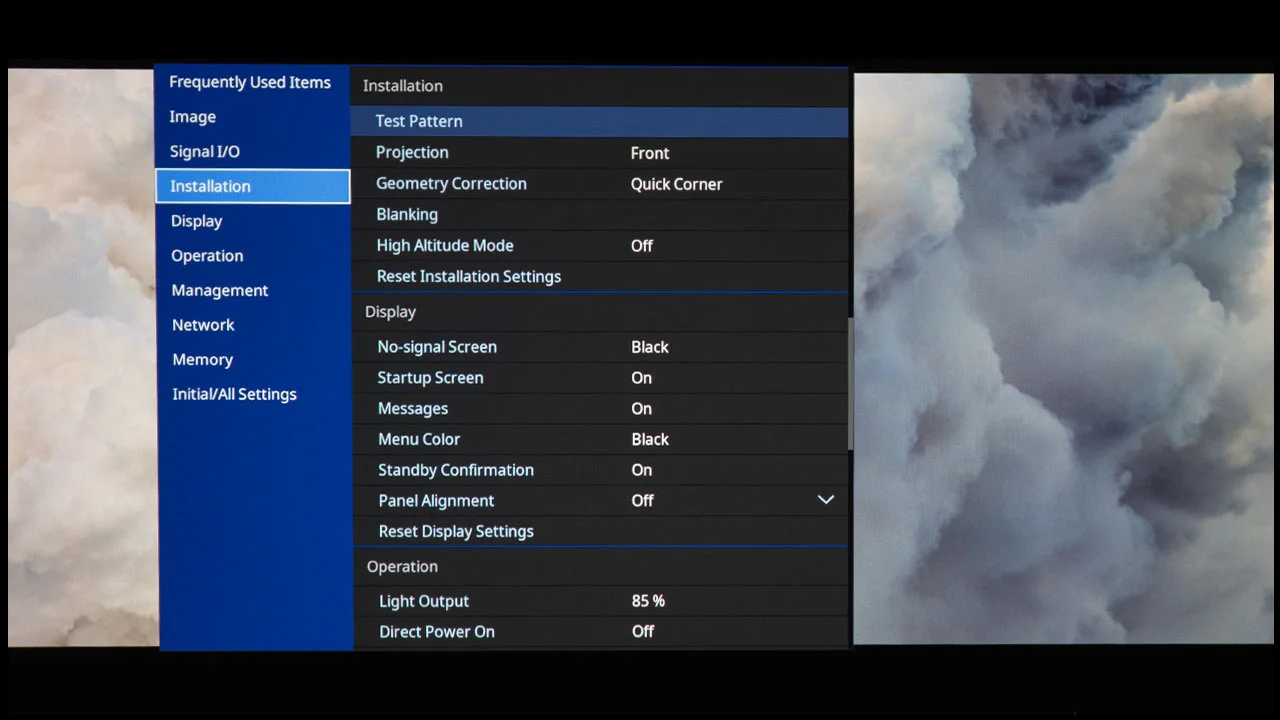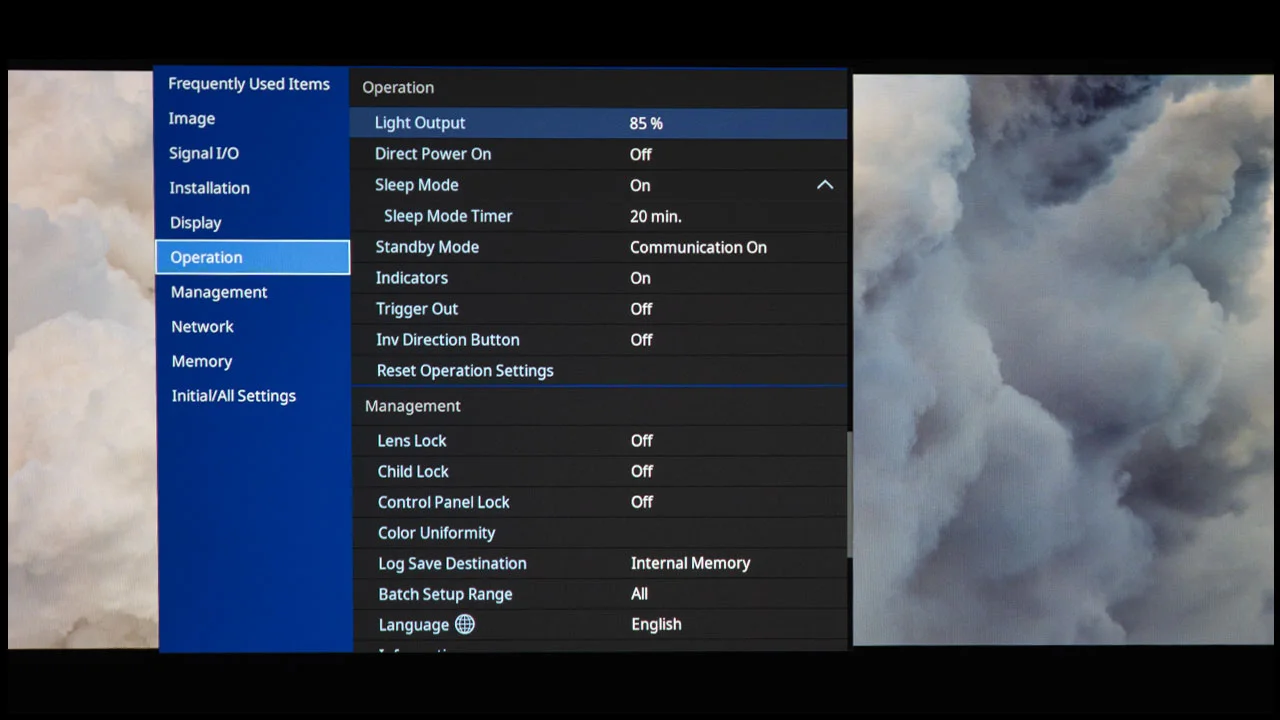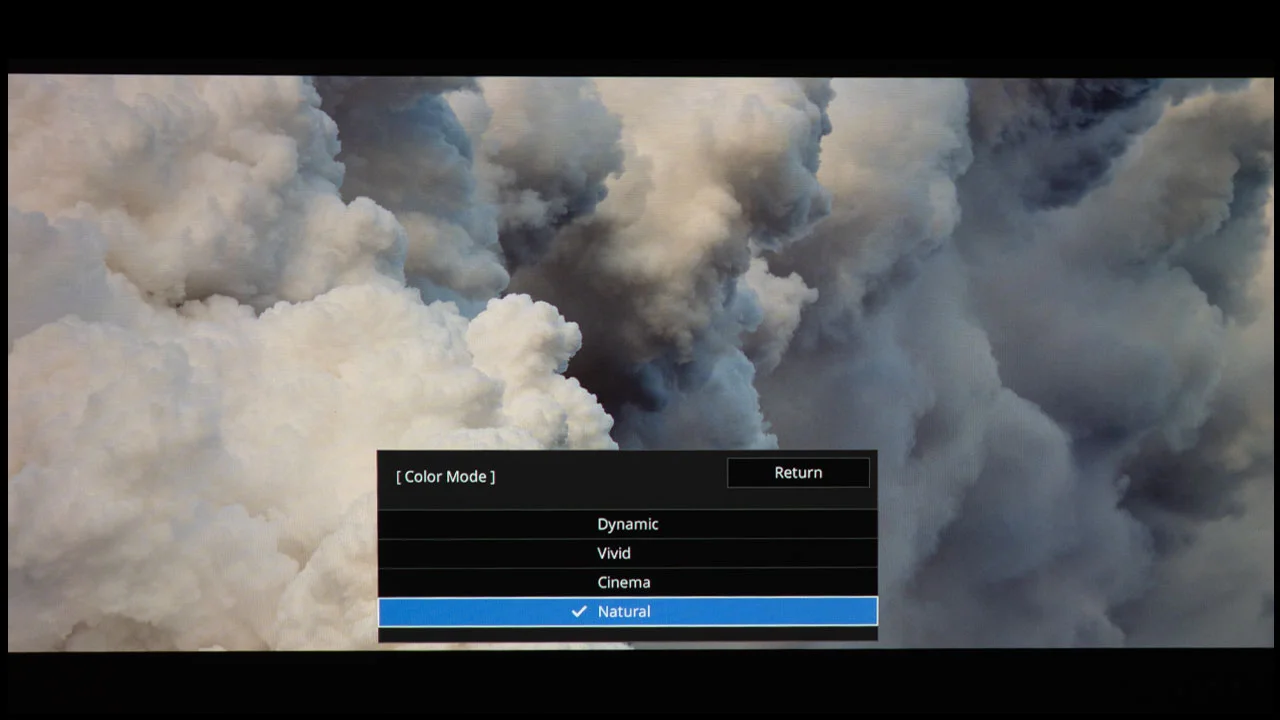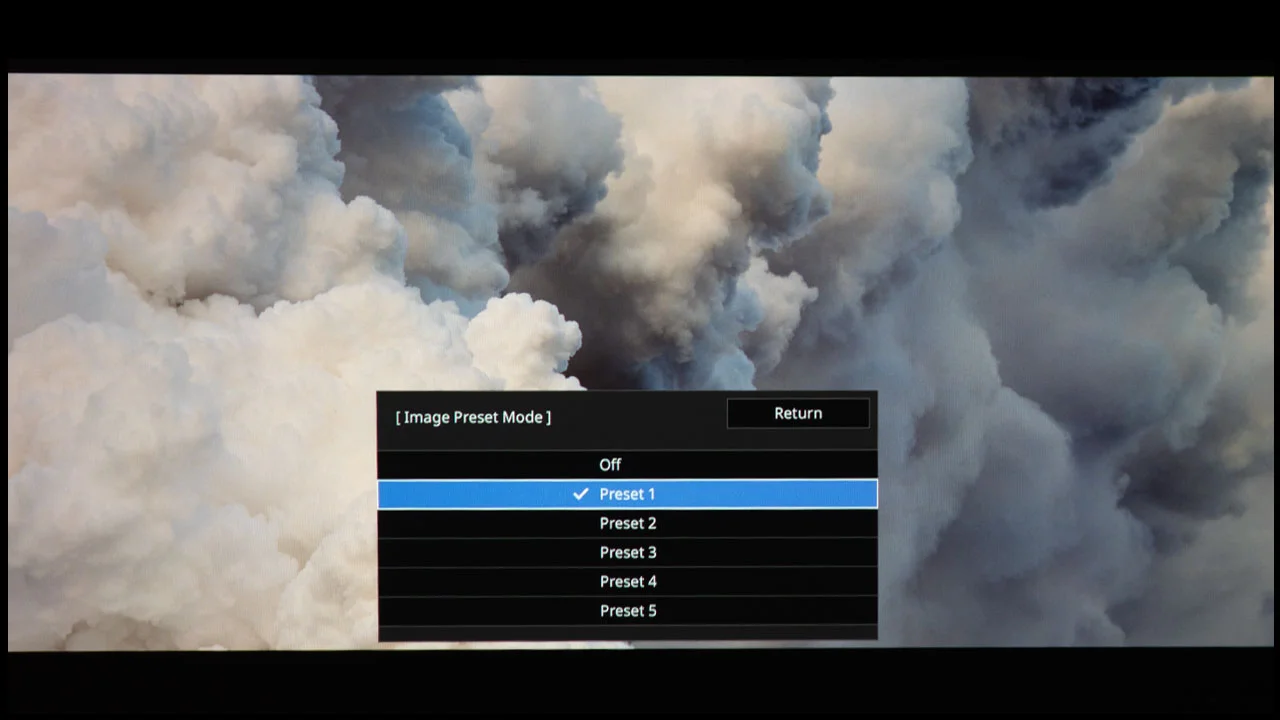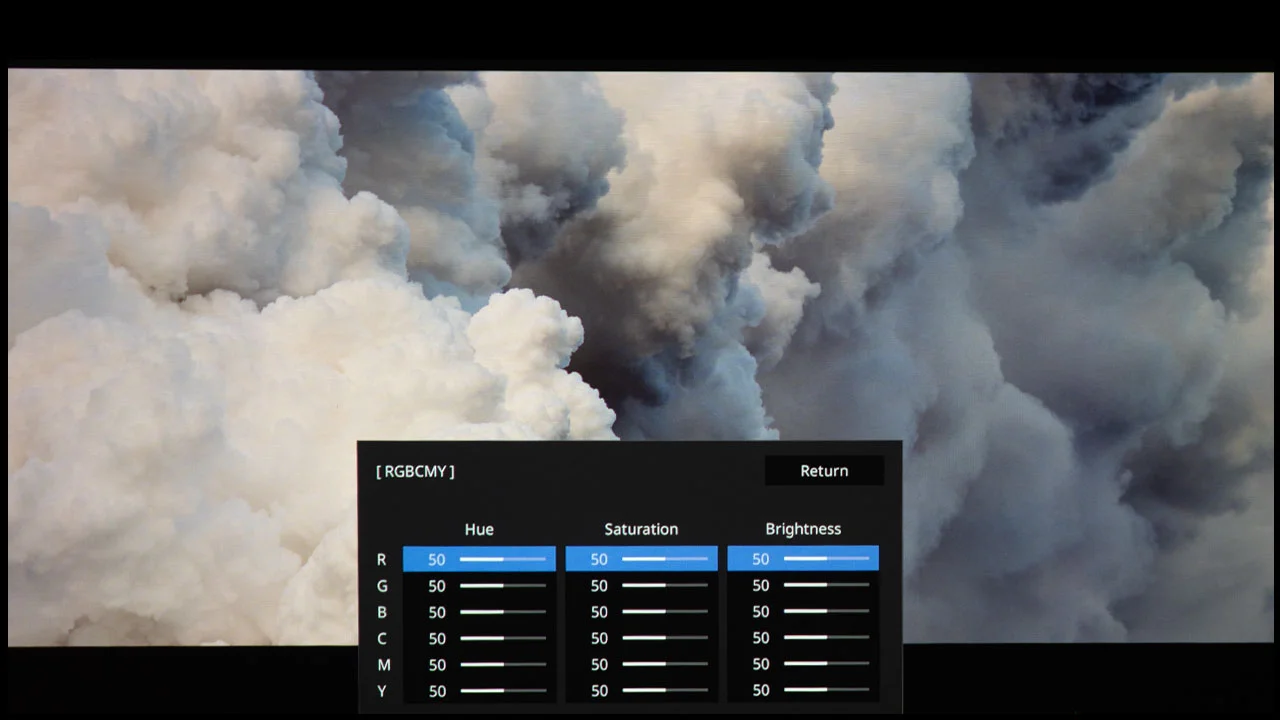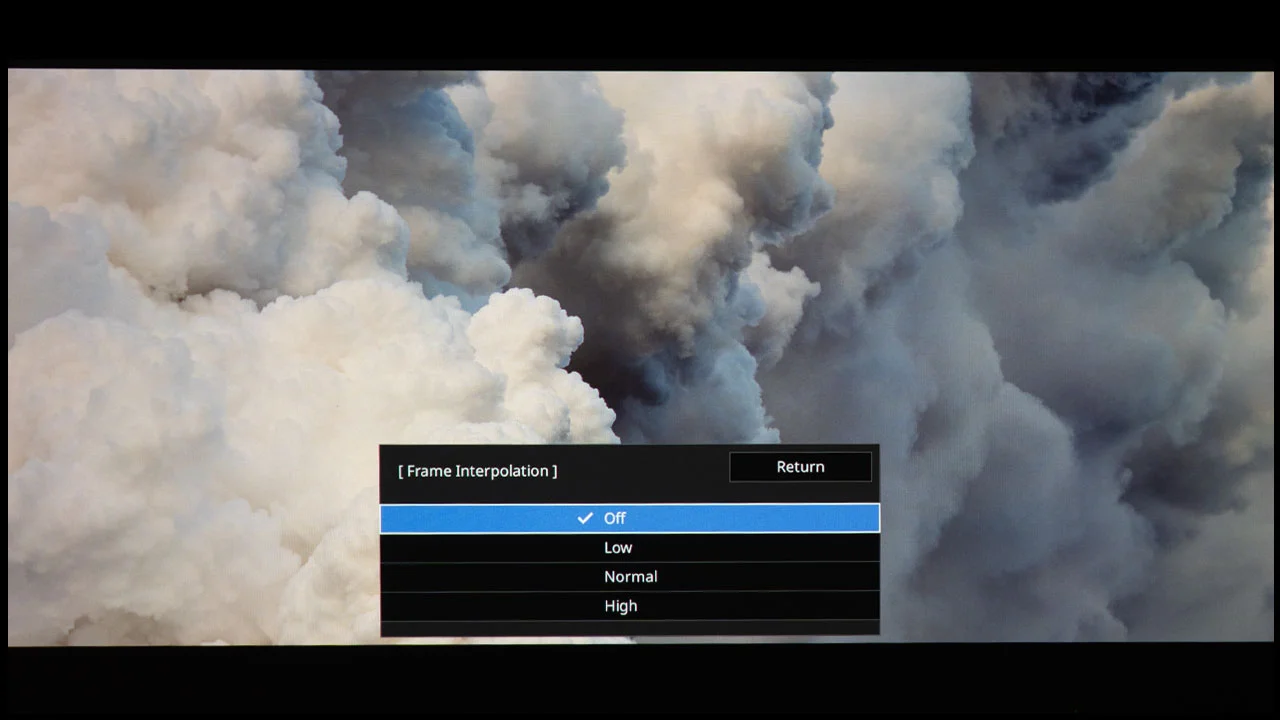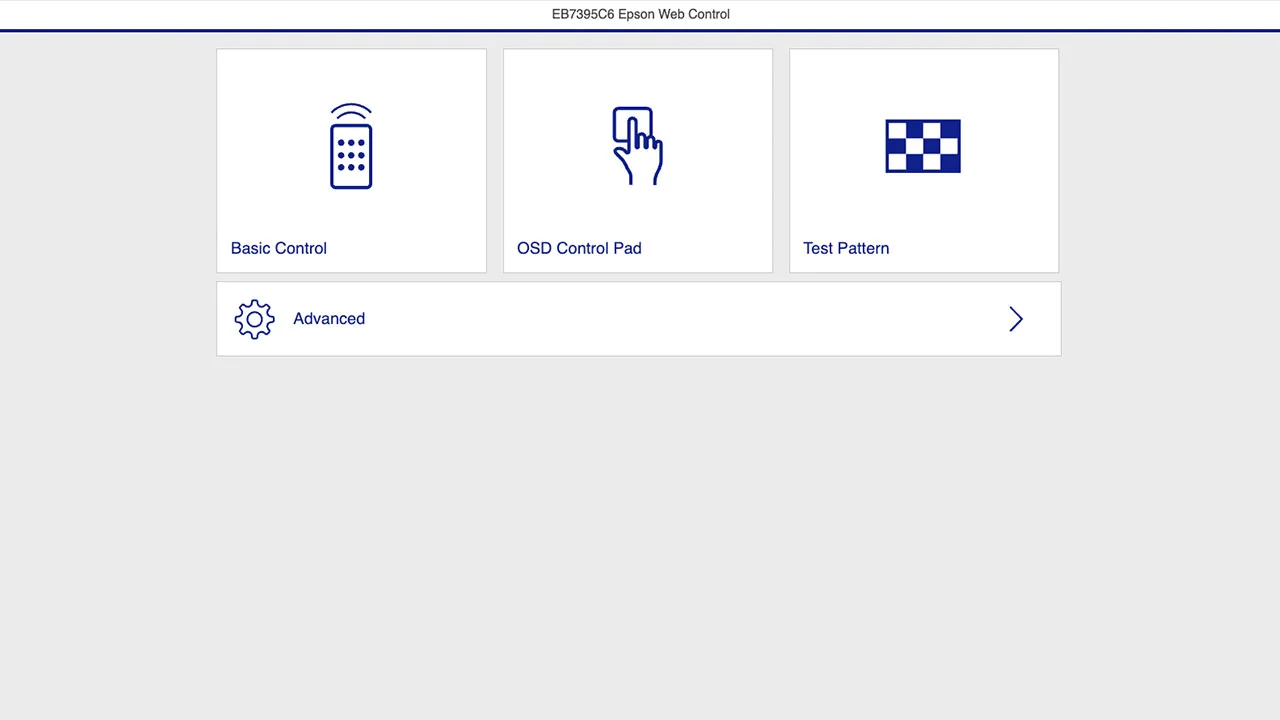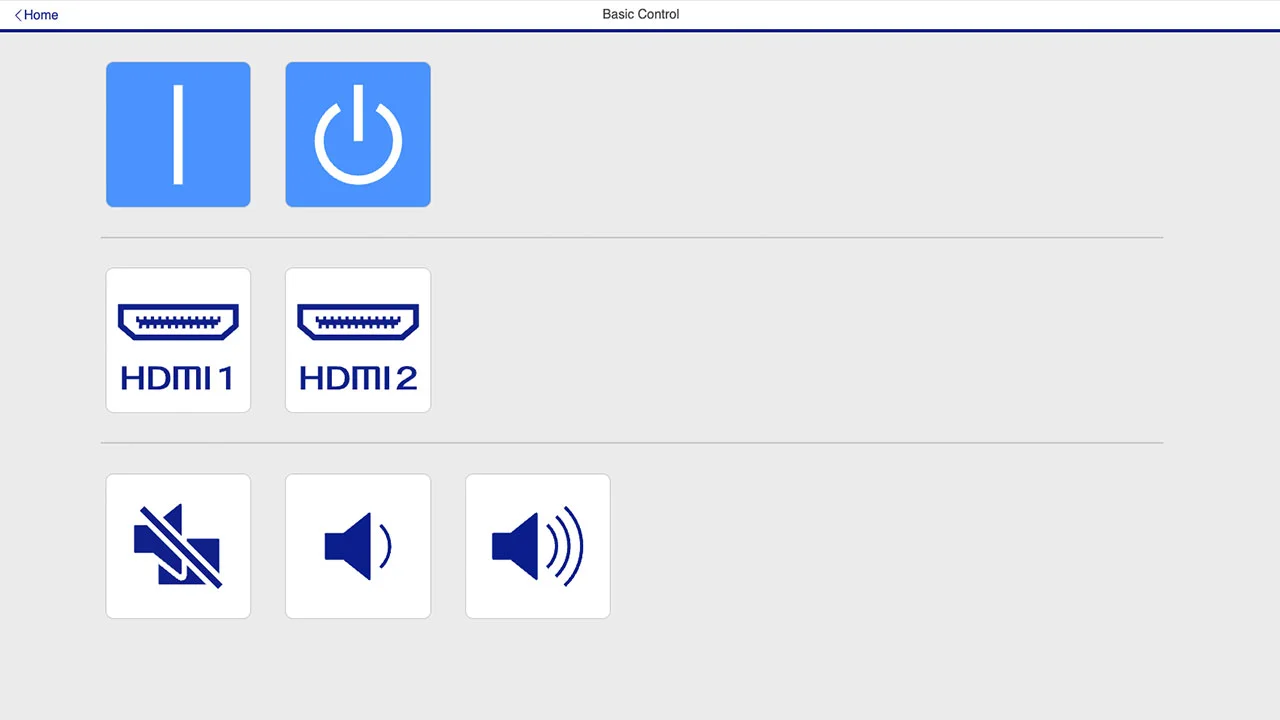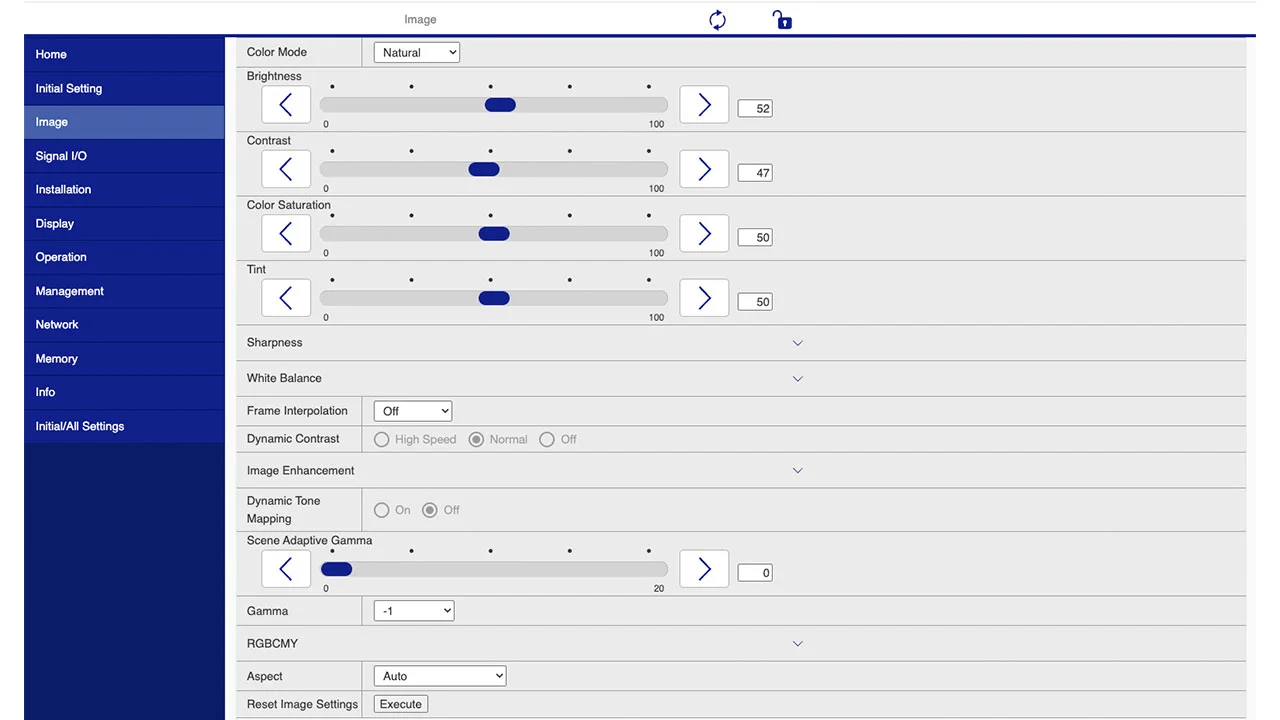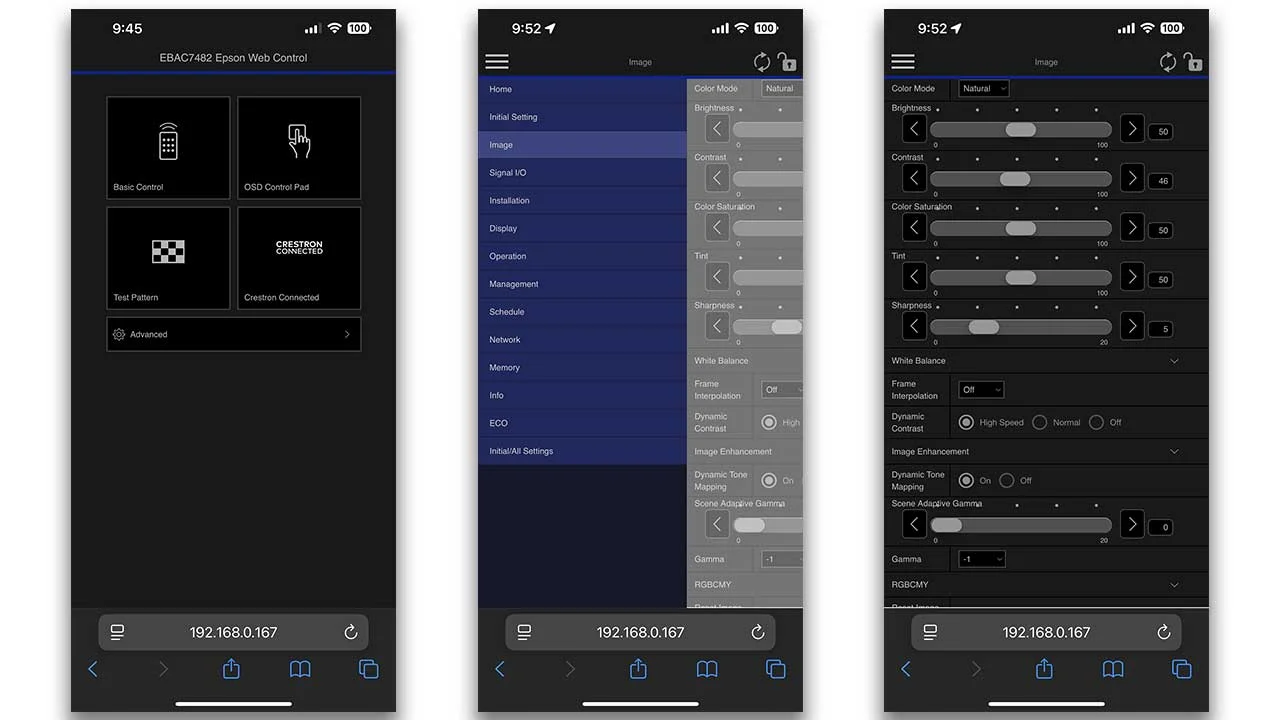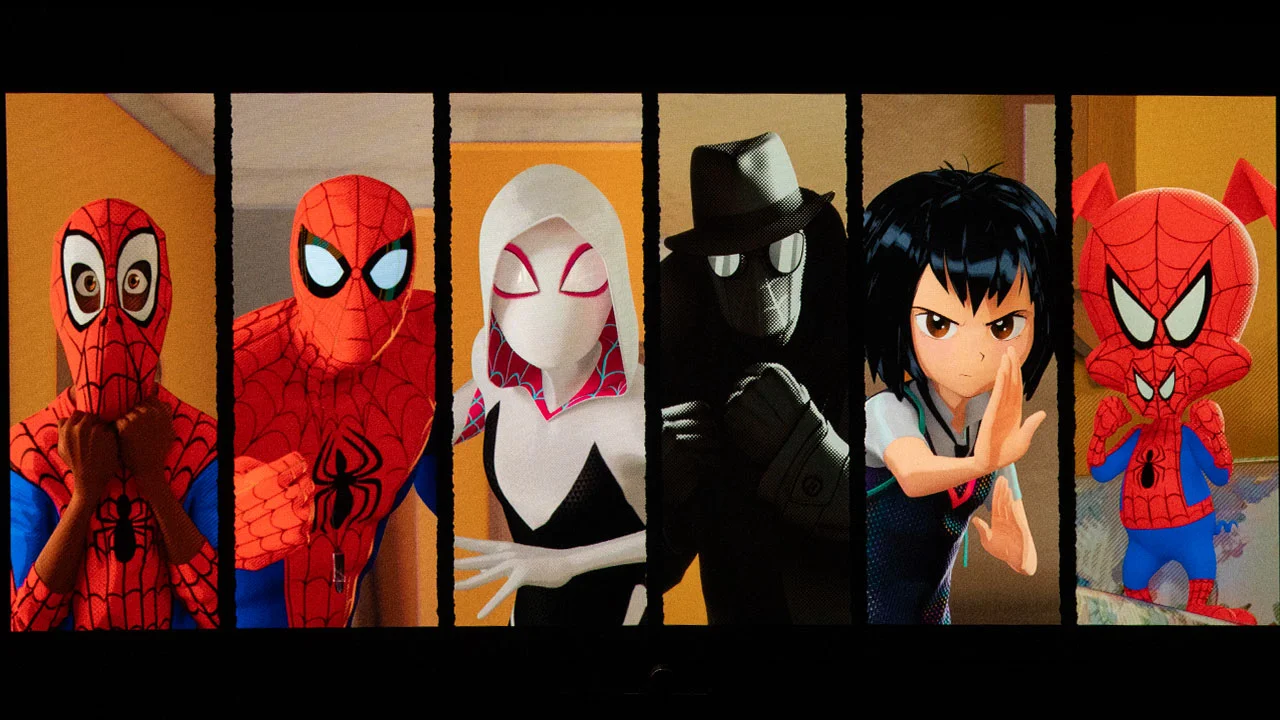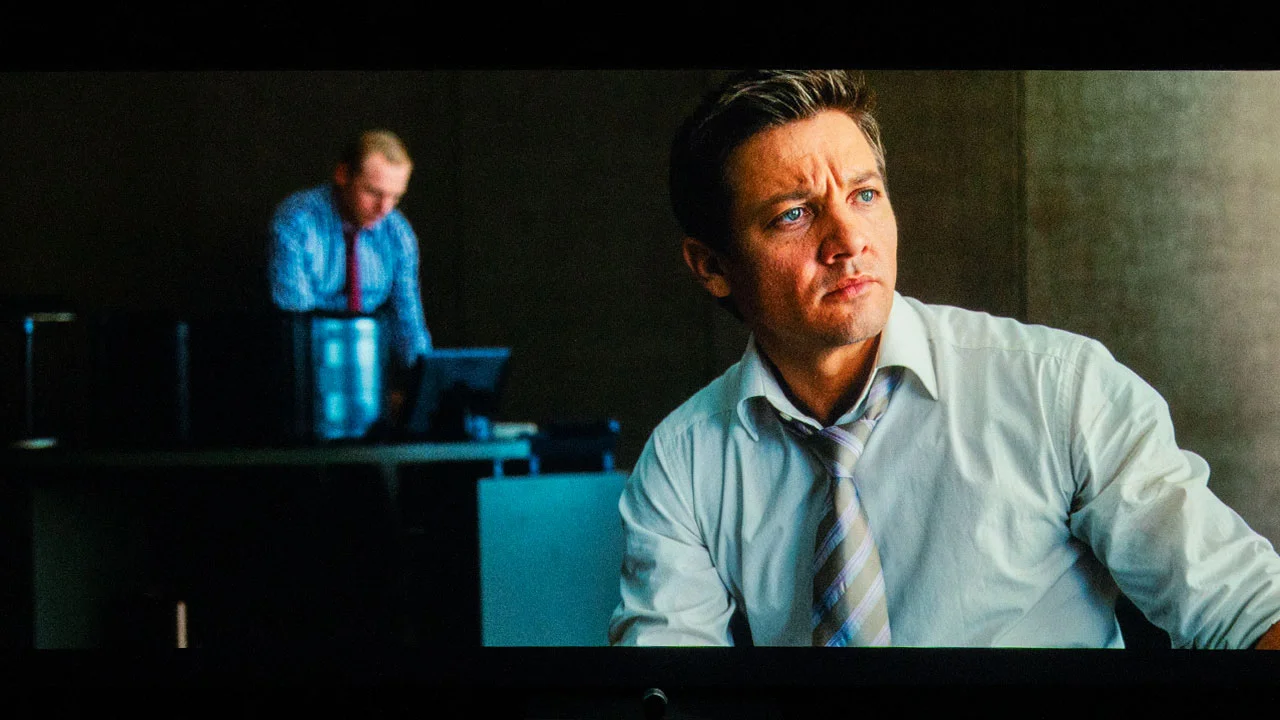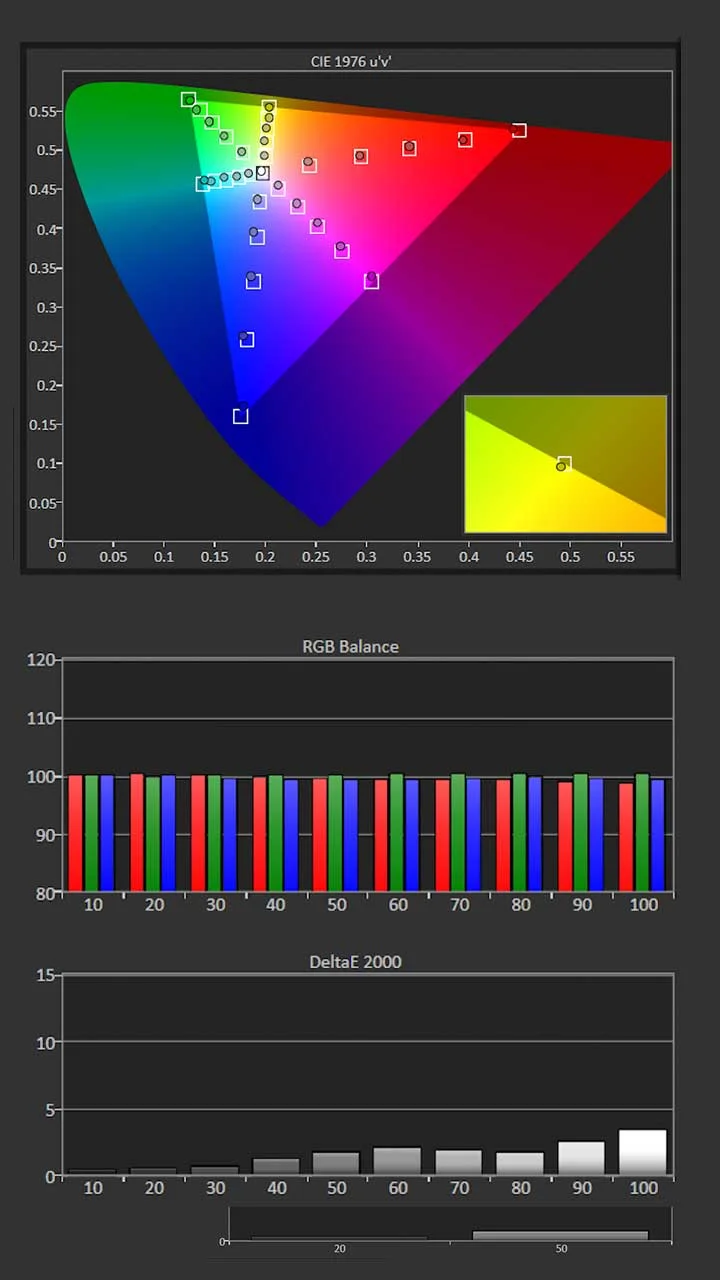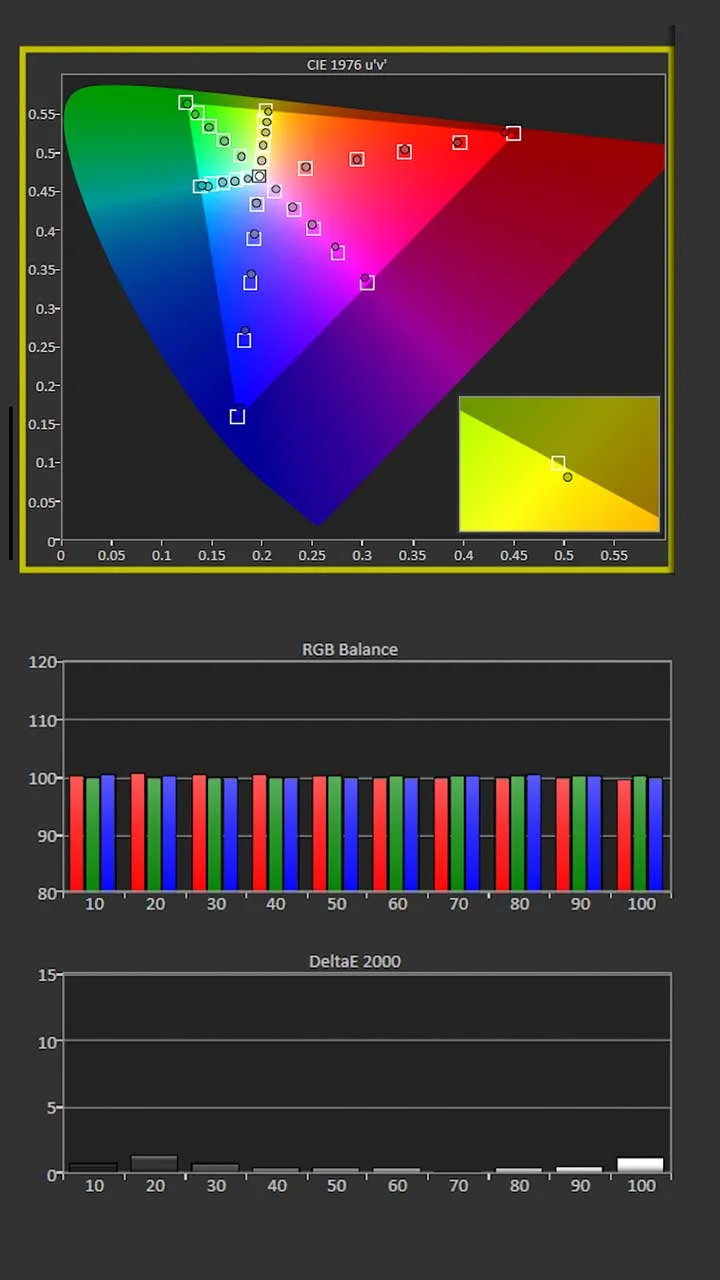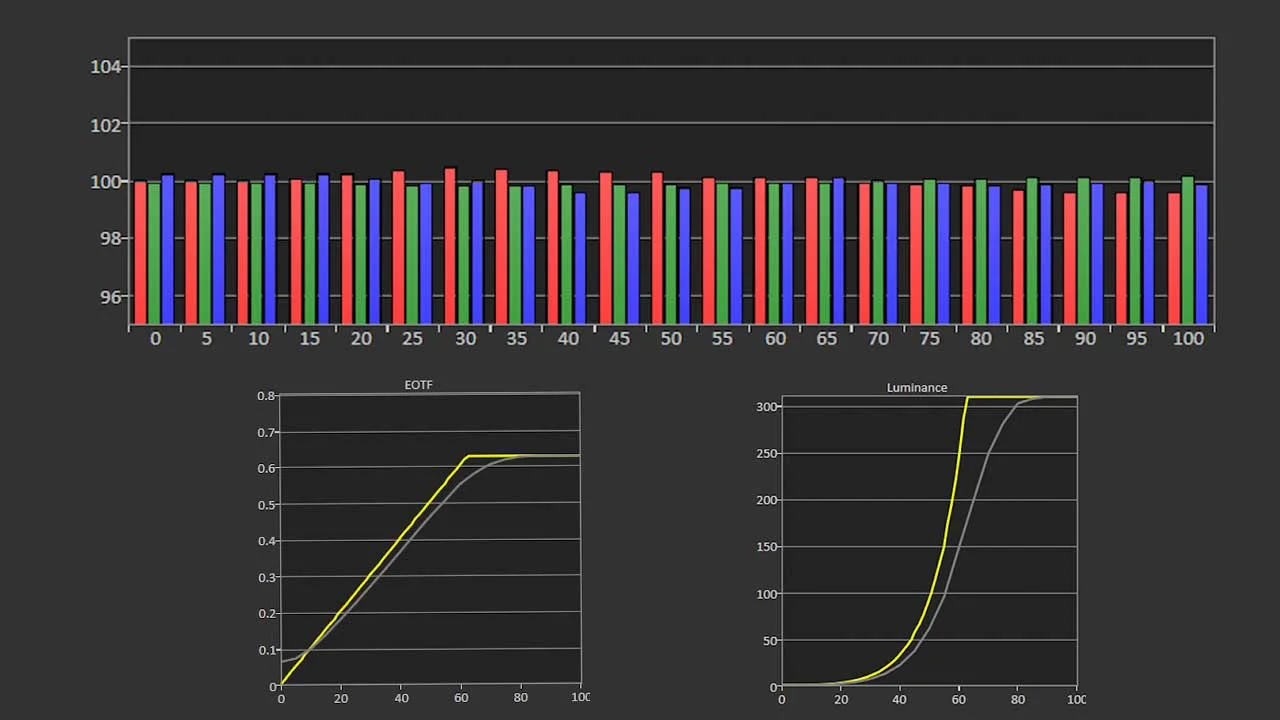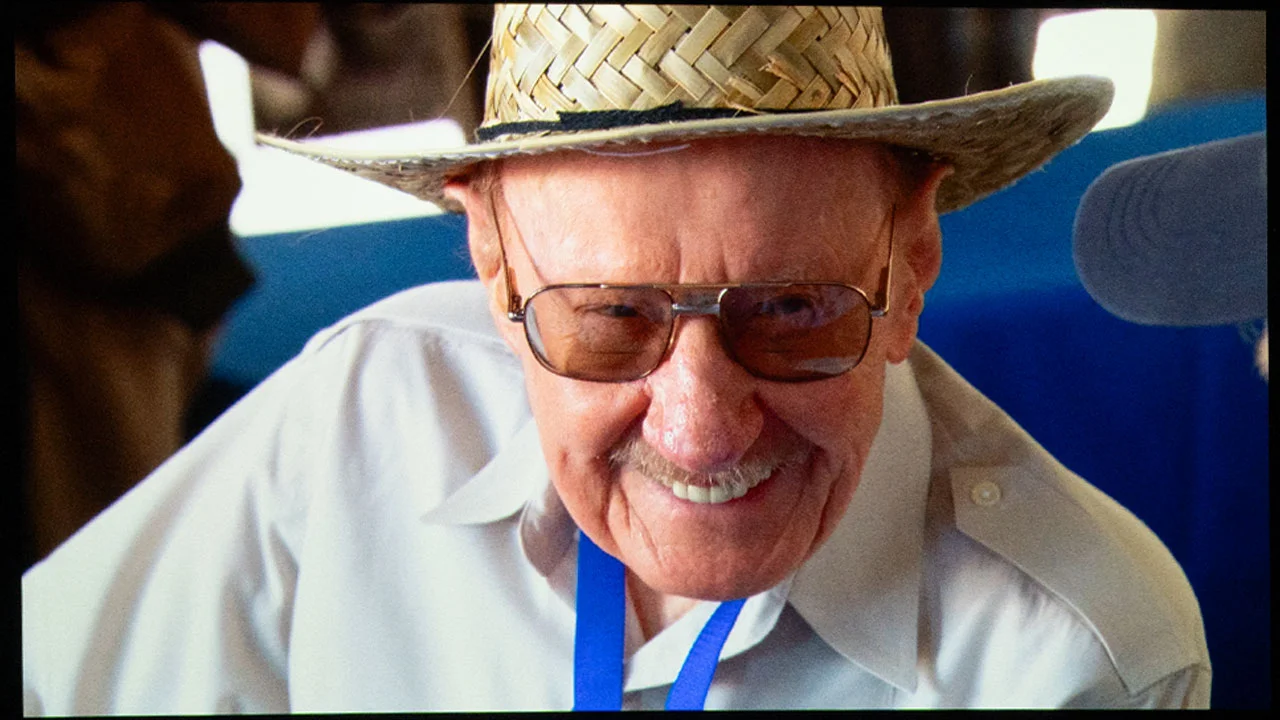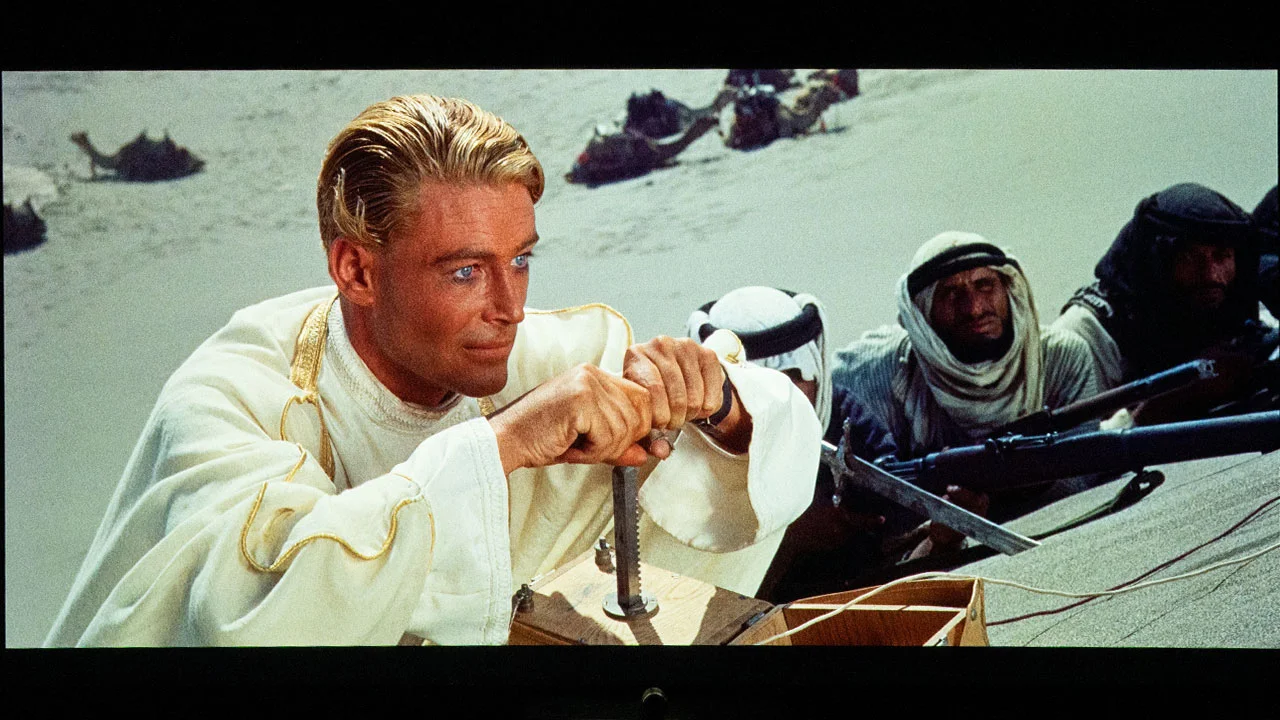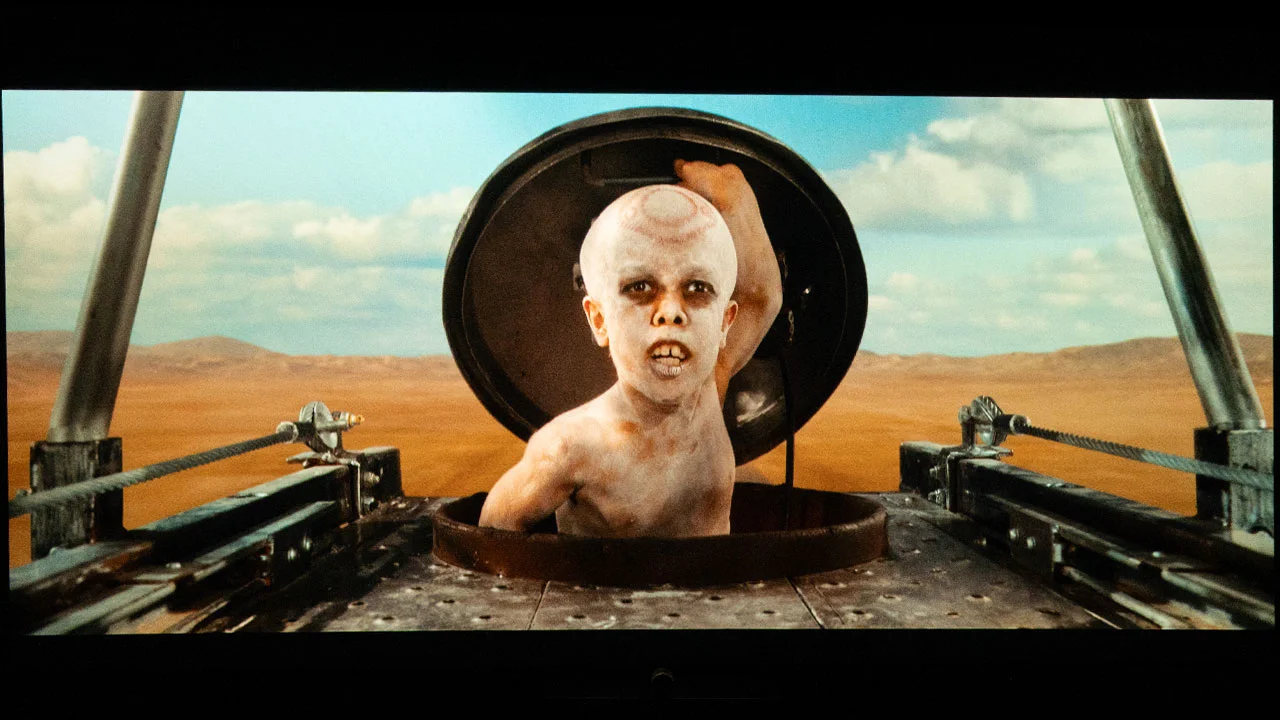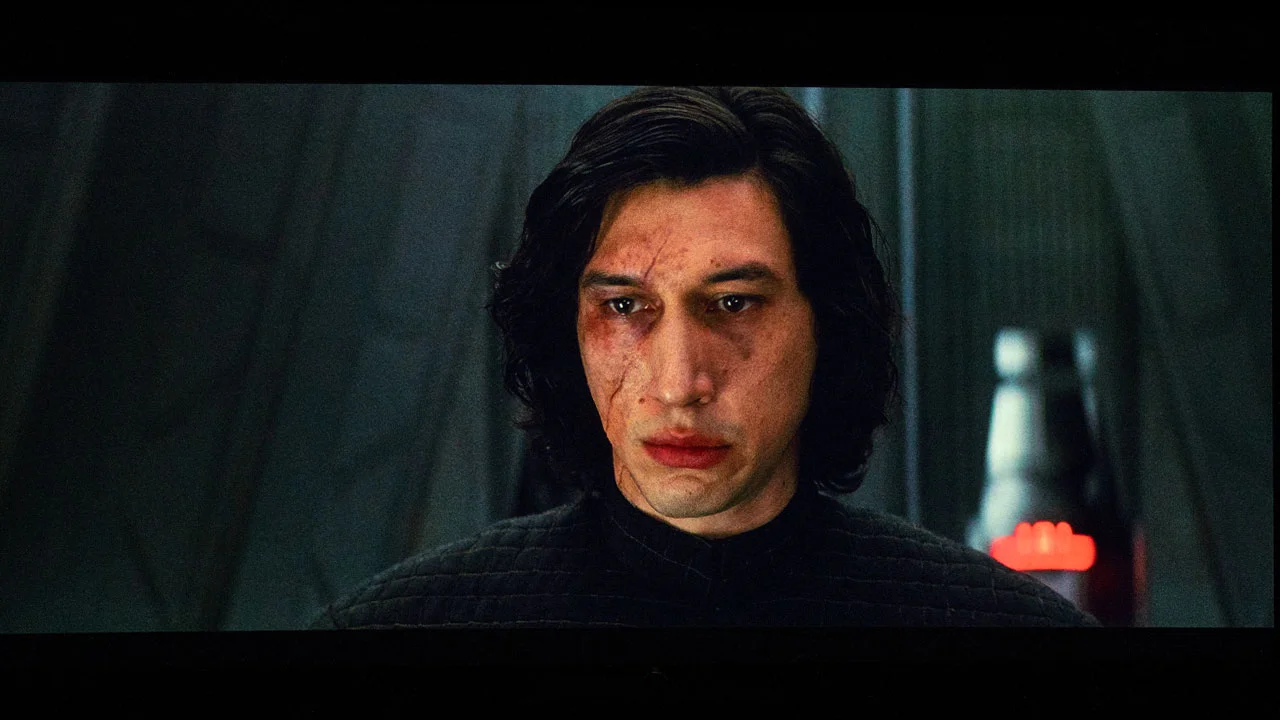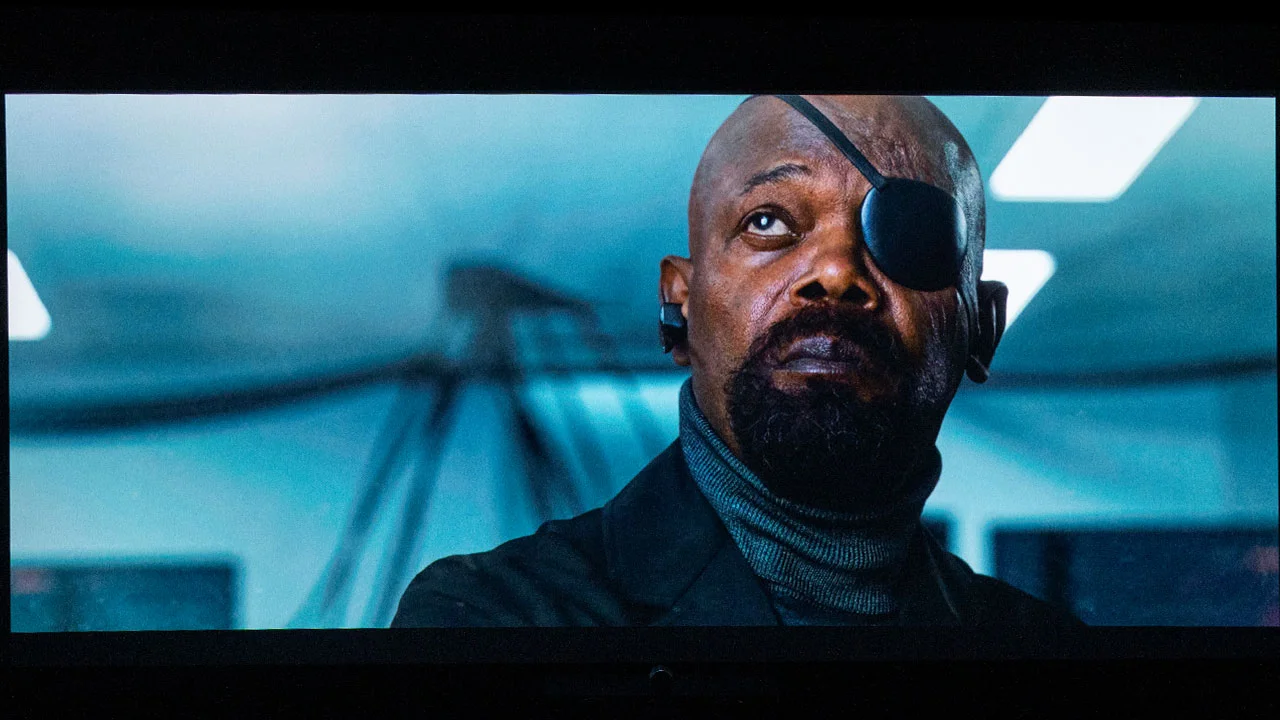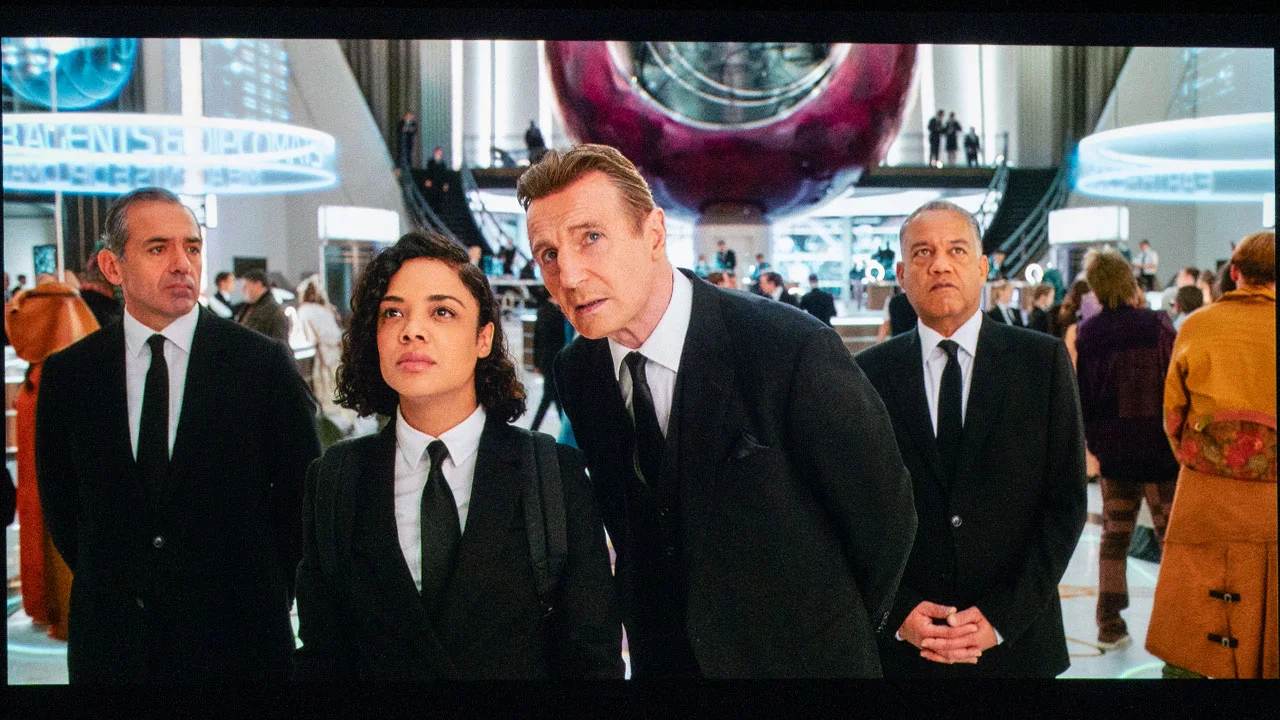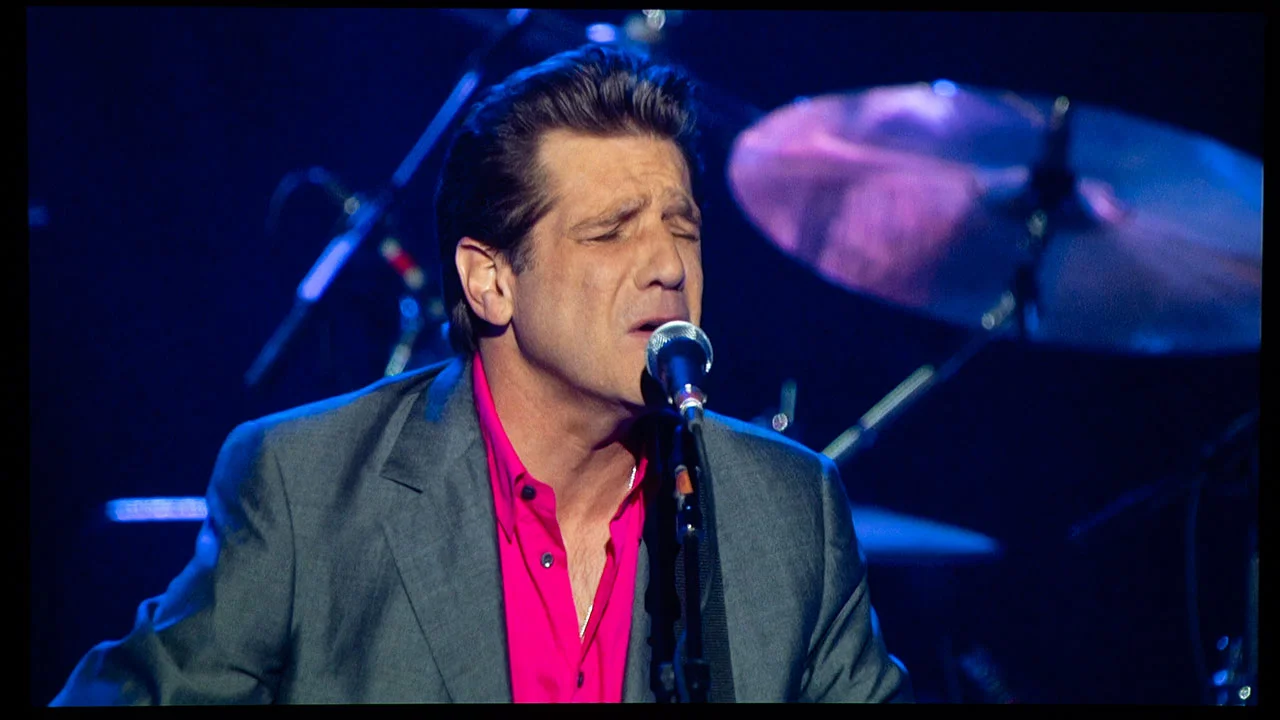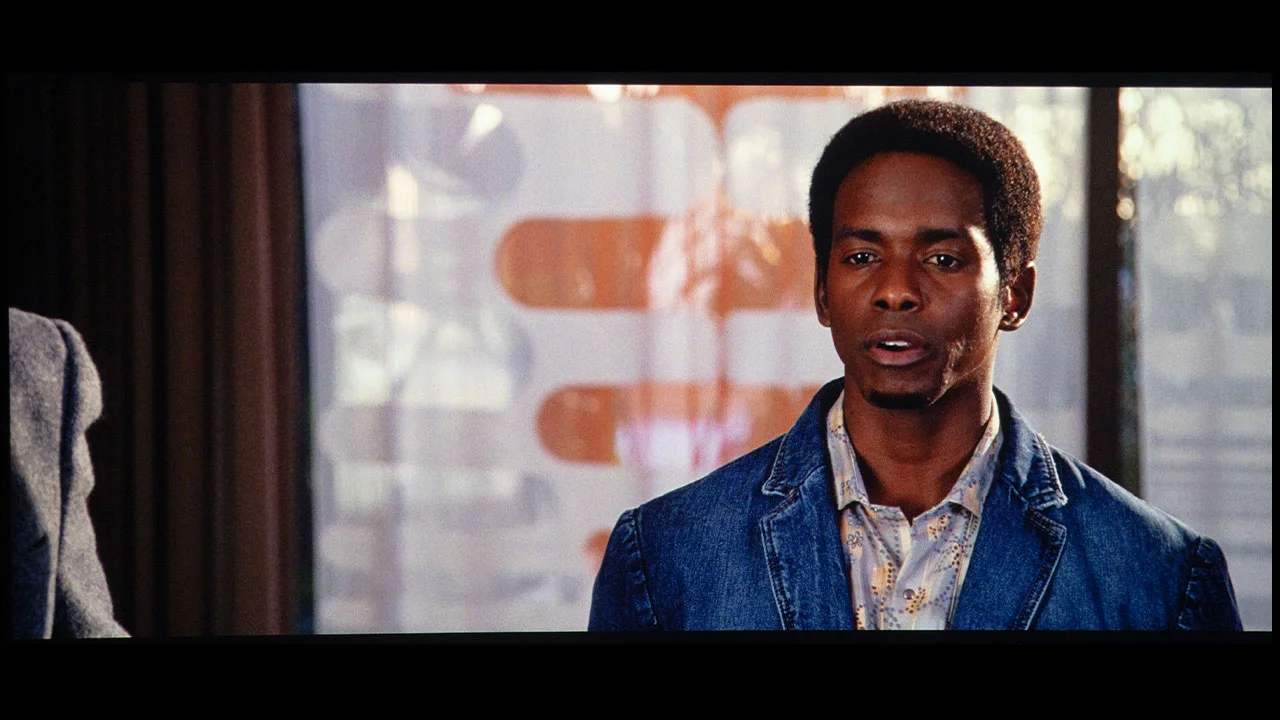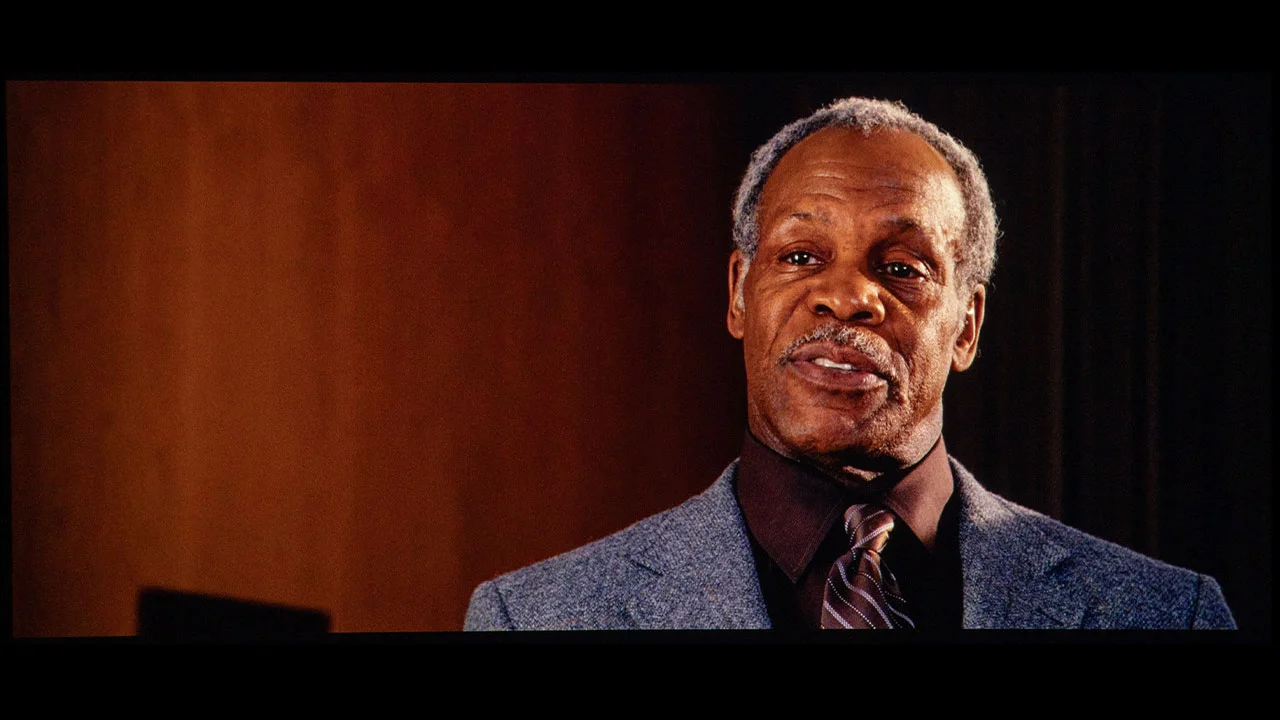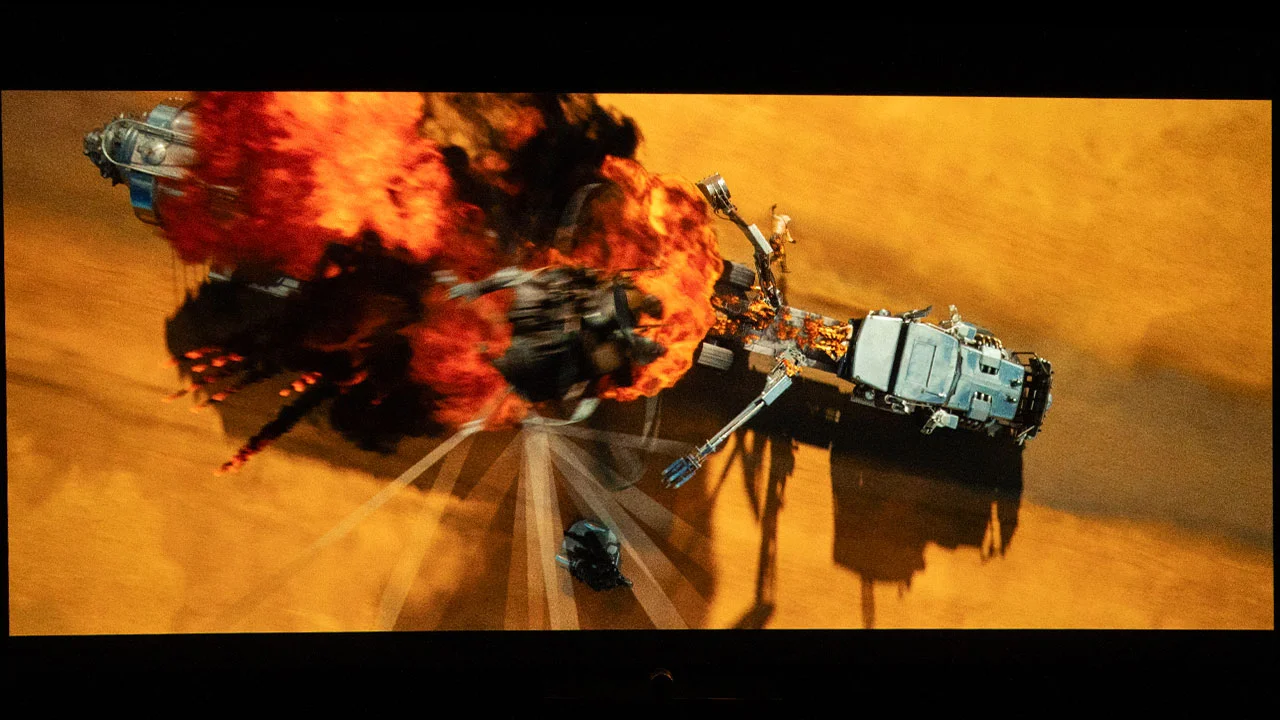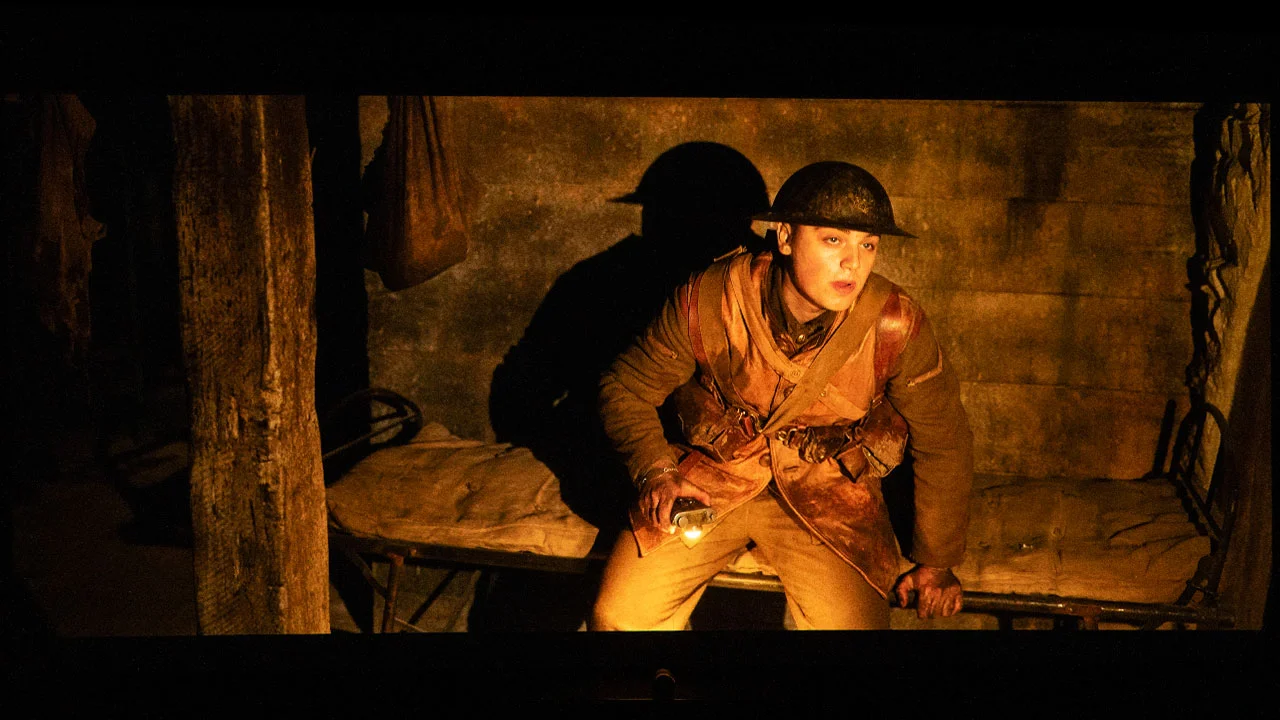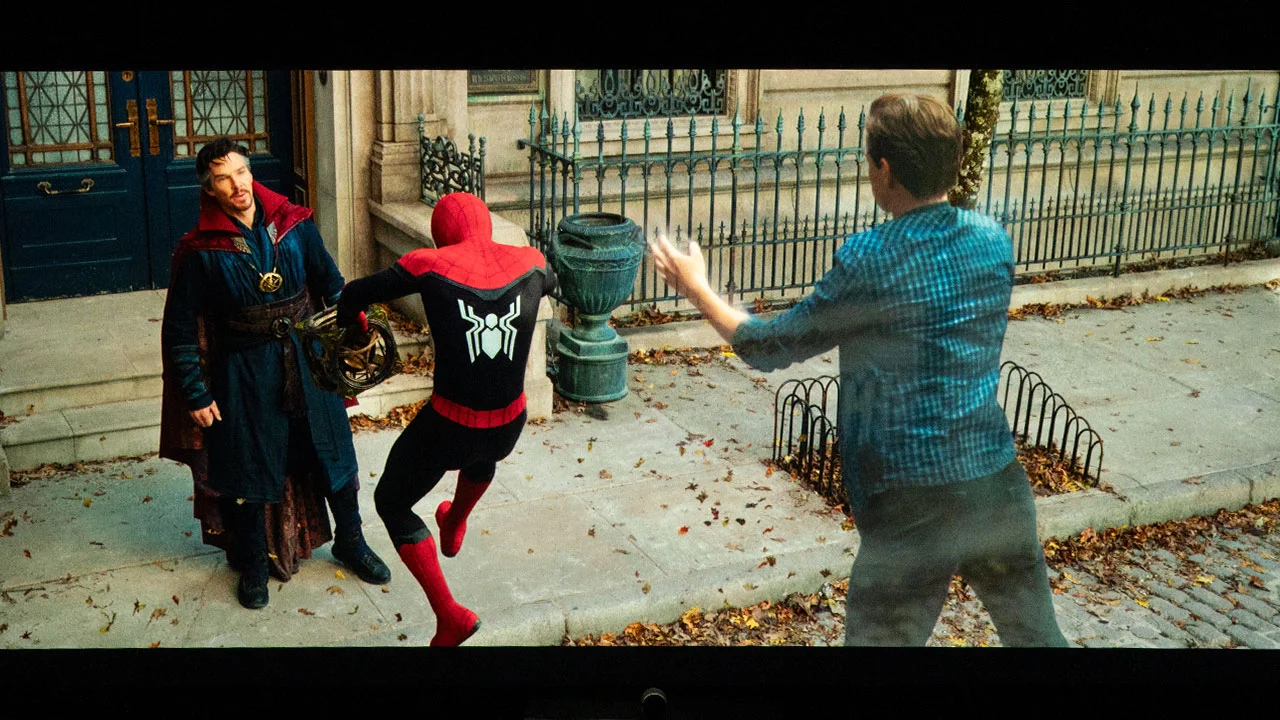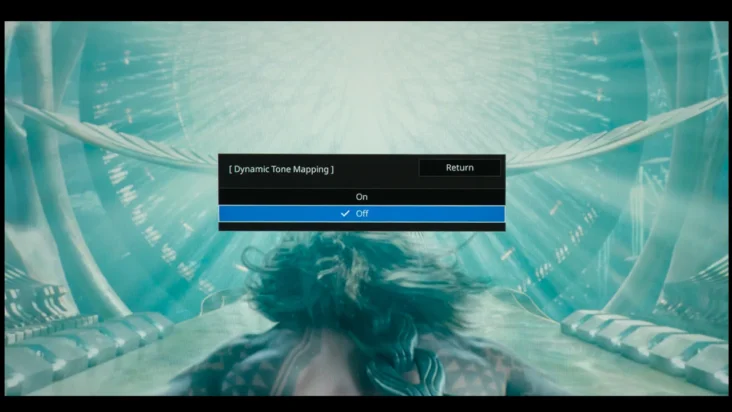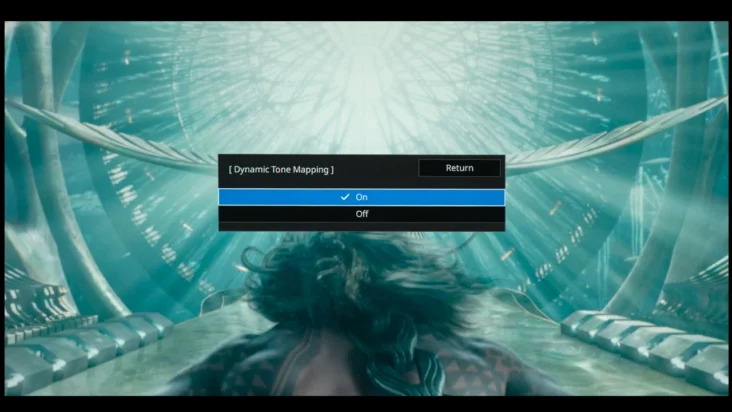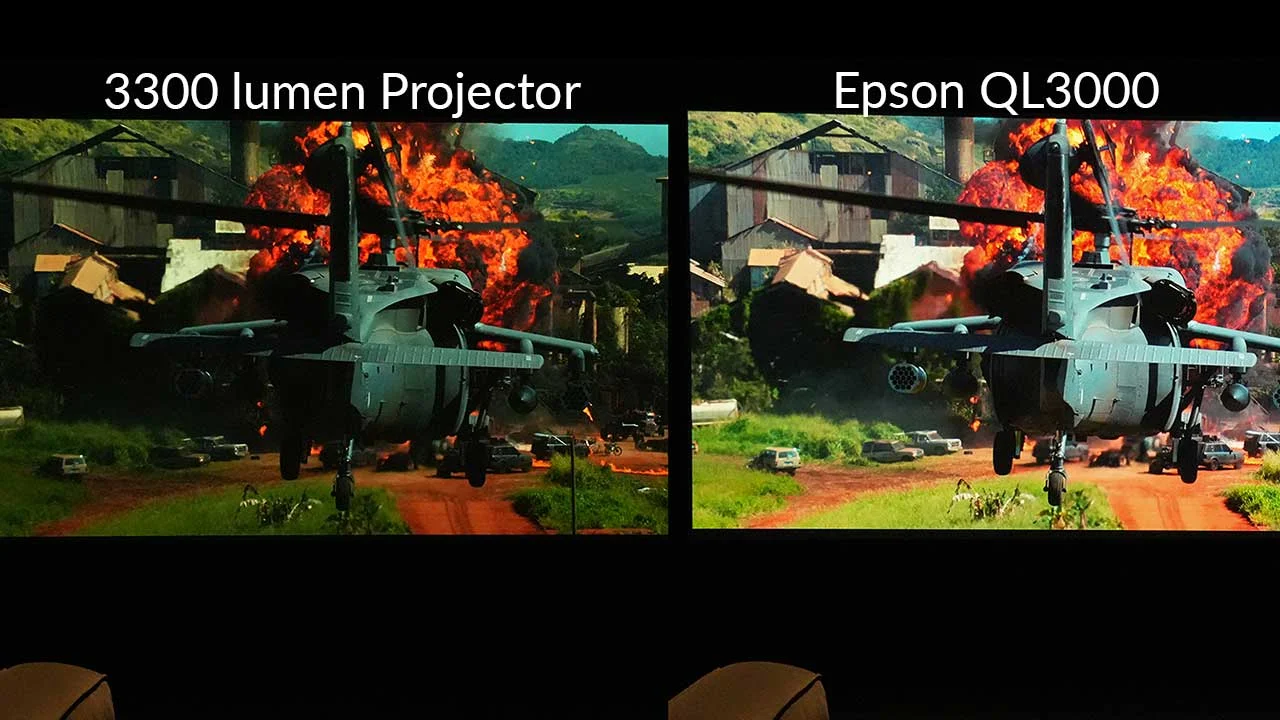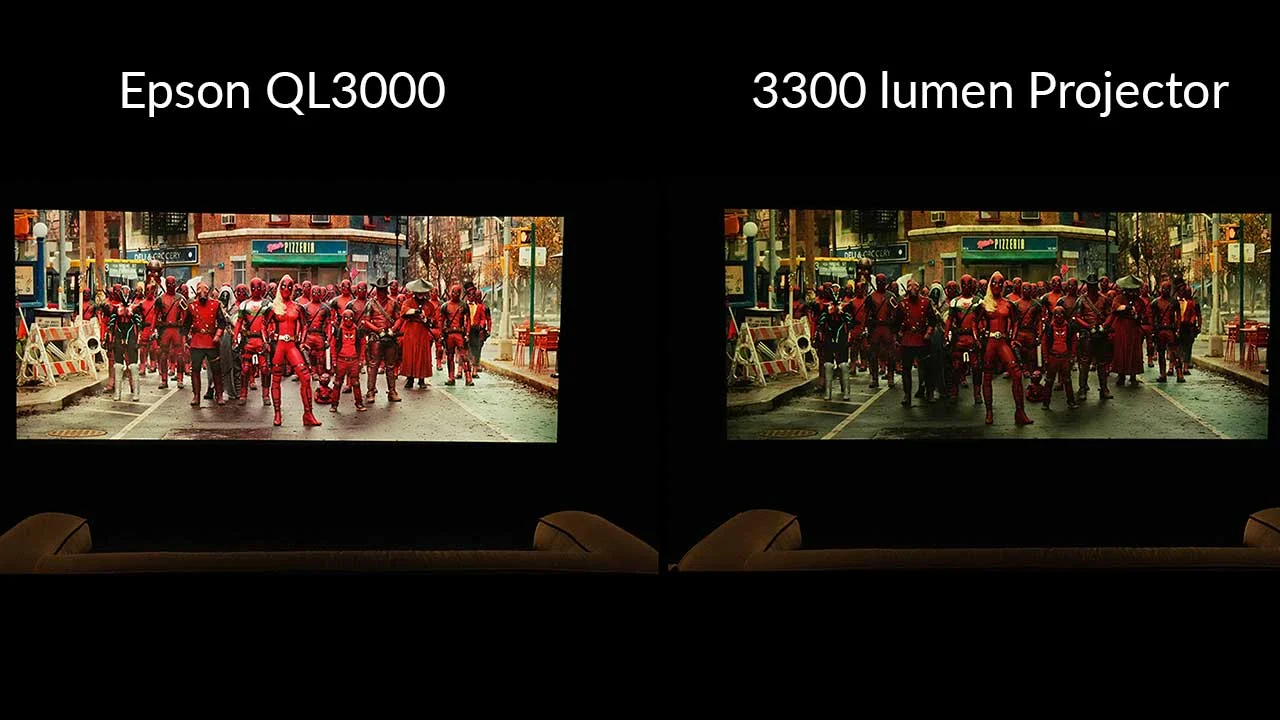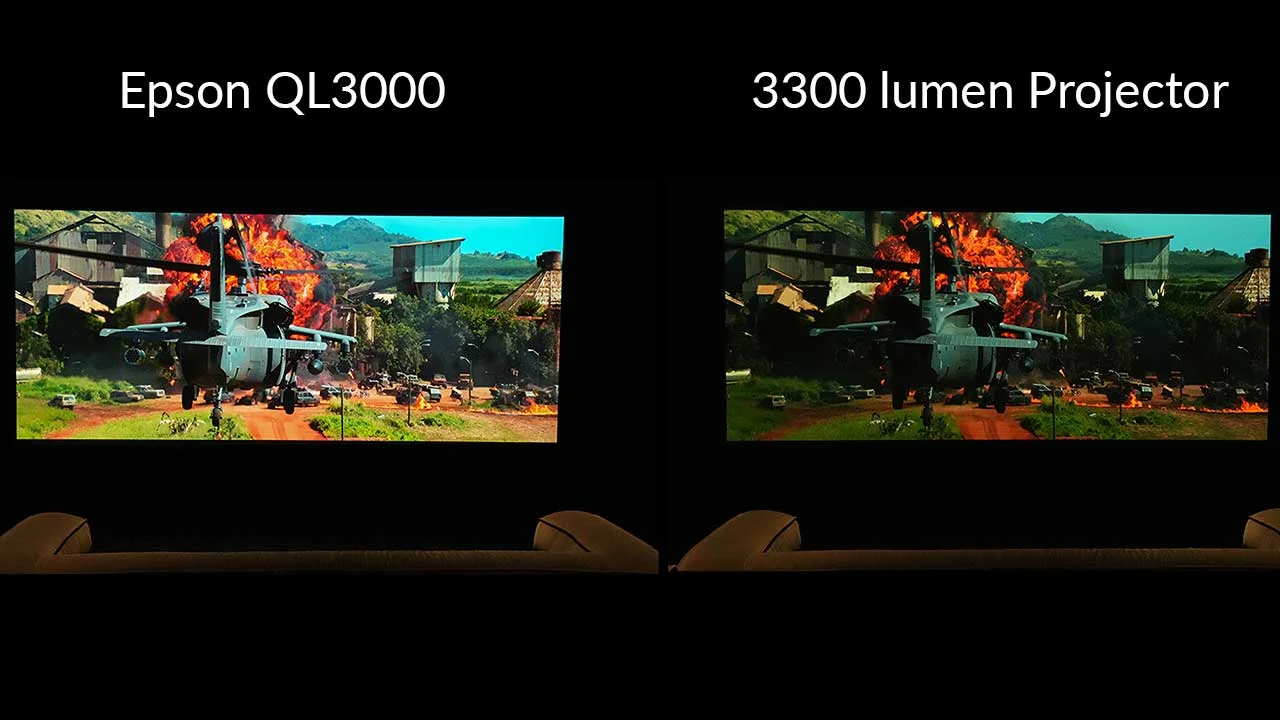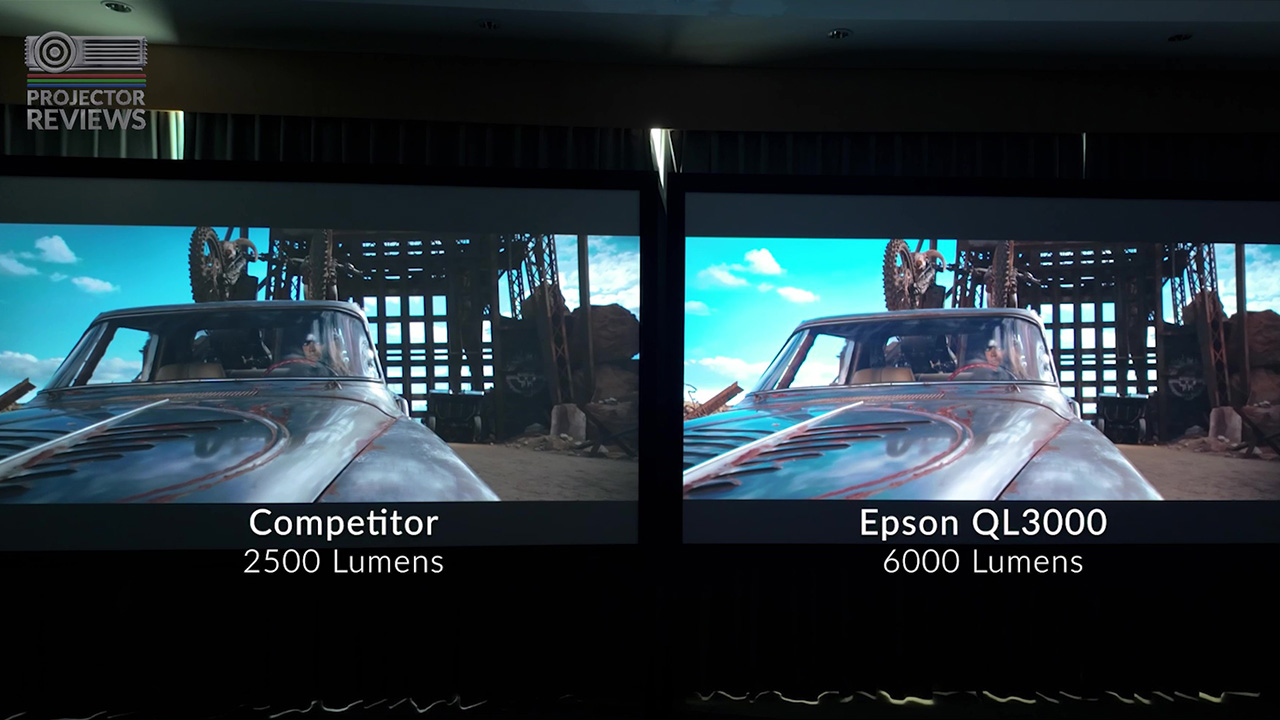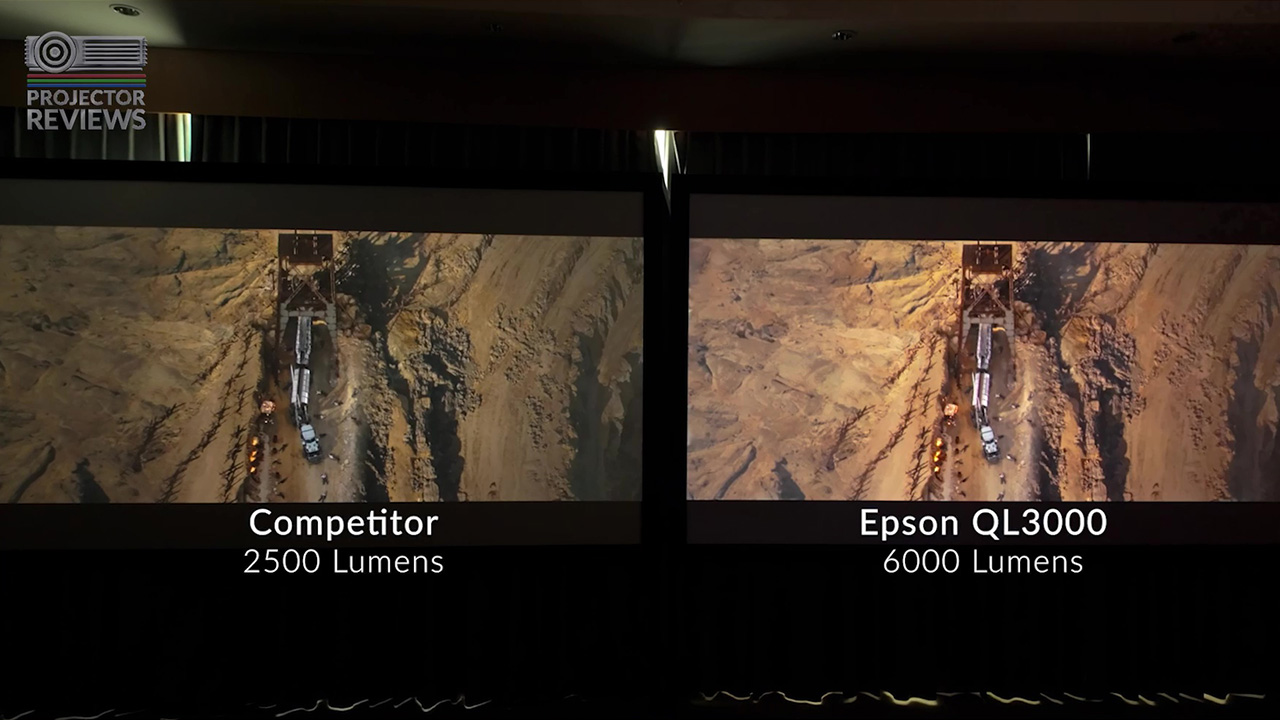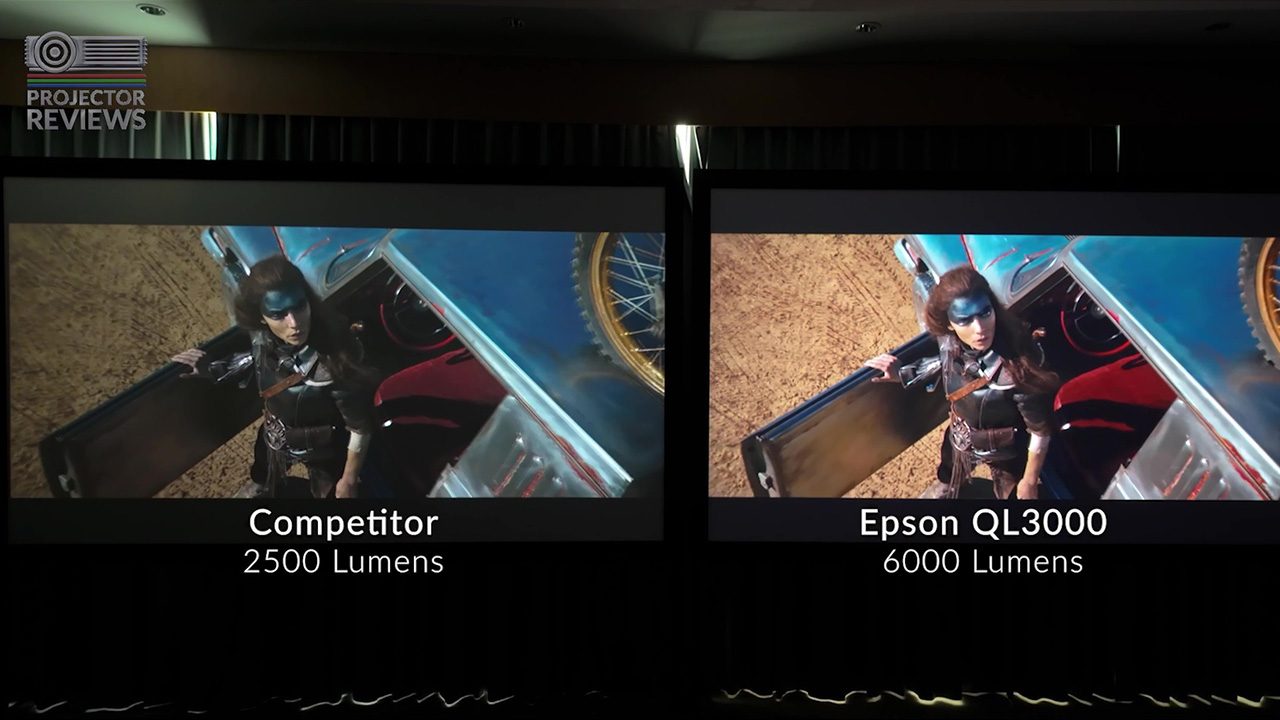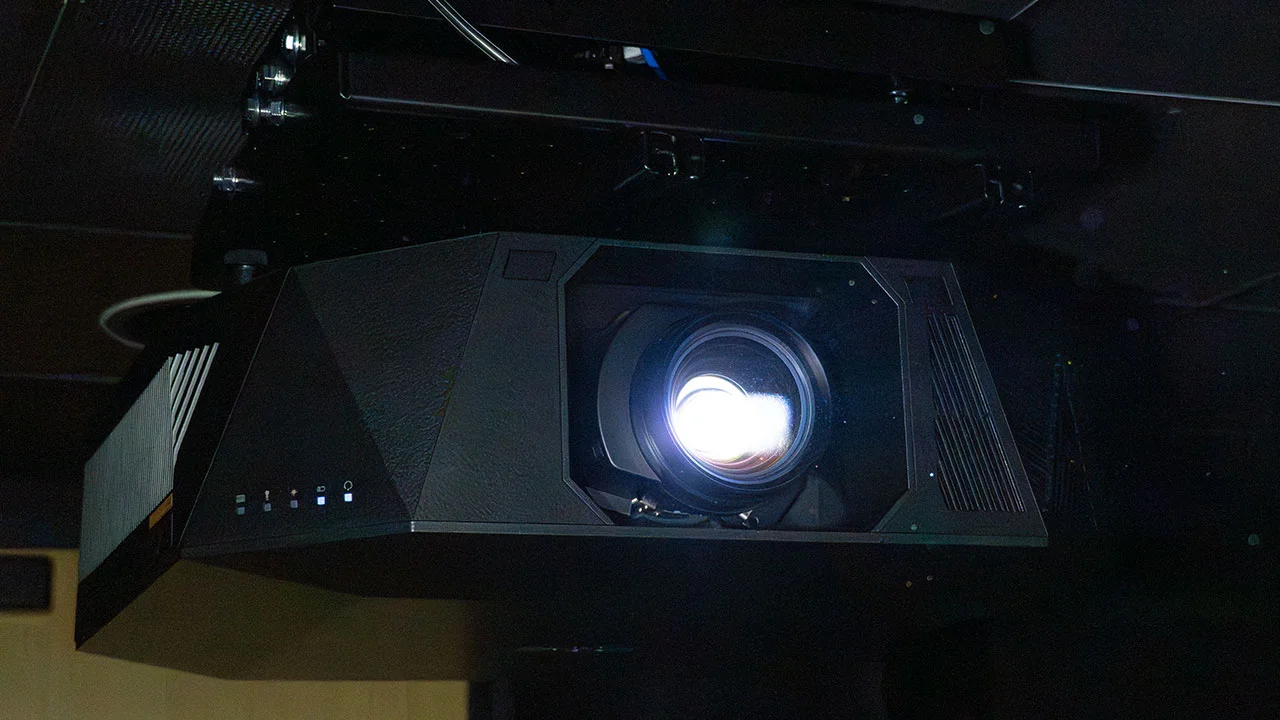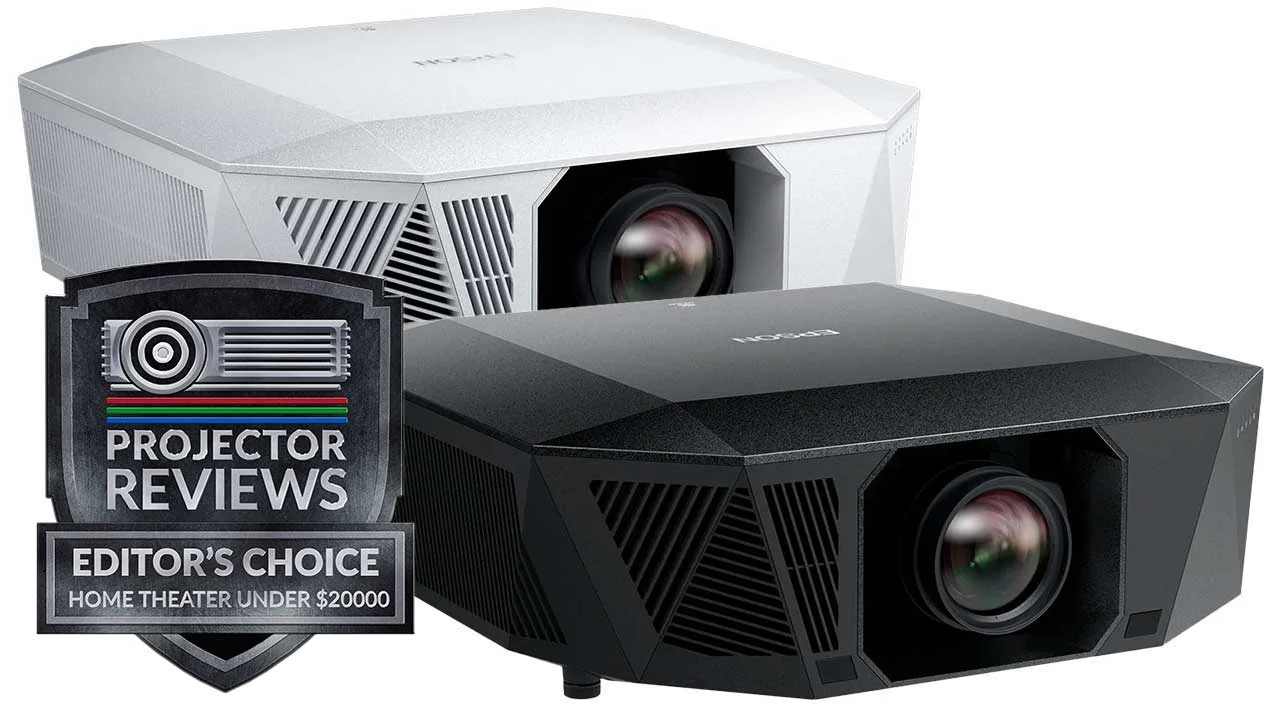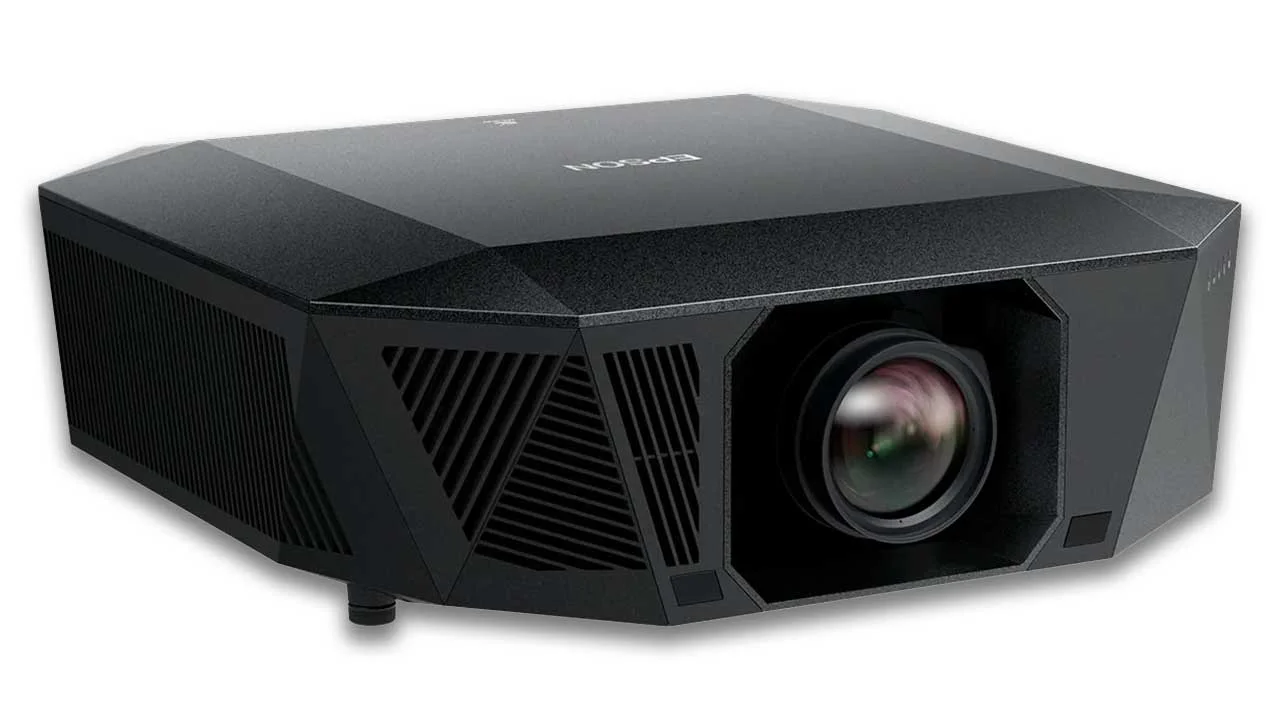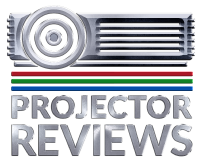The Epson QL3000, which retails for $15,999 (body only)is a high-lumen interchangeable lens 4K HDR laser projector positioned between the award-winning QB1000 and the flagship QL7000 in Epson's Q-Series lineup. Designed for living rooms and large media spaces where ambient light is a factor, the QL3000 balances performance, brightness, and installation flexibility.
With its Full HD 3LCD panels, dual-axis pixel shifting, and rated brightness of 6,000 lumens, the QL1000 produces a bright and colorful 4K onscreen image on screens exceeding 150” screen even under some ambient light. Supported HDR formats include HDR10 and Hybrid Log-Gamma (HLG). HDR content is enhanced by the projector’s 10-bit processing and dynamic tone mapping performed by the 32-bit Epson QZX processor.
The lens assembly is sold separately. The QL3000 is compatible with Epson lenses such as the ELPLX01S and ELPLM10. These lenses support motorized shift, zoom, and focus. The zoom range is up to 1.6x, and the throw ratio can vary from approximately 0.35 to 10.57, depending on the selected lens.
The QL3000 offers multiple preset picture modes, including Dynamic, Vivid, Natural, and Cinema. The QL3000 also delivers excellent color reproduction right out of the box. The NATURAL and CINEMA modes are the most accurate, but for those who love to tinker or for installers optimizing it, the QL3000 includes all the picture adjustments you could ever need.
The projector does not support 3D playback. For gaming, the QL3000 delivers input lag of approximately 20 milliseconds at a 4K@120Hz refresh rate. The projector’s HDMI 2.1 inputs support Auto Low Latency Mode (ALLM), which automatically switches the projector’s image processor to “Fast” when a gaming signal is detected from compatible gaming sources.
With a retail price around $18,000 (body and lens), the QL3000’s closest competitors are the Sony BRAVIA Projector 8 (VPL XW6100ES) and the JVC NZ800.
Sony BRAVIA Projector 8 (VPL-XW6100ES)
The Sony BRAVIA Projector 8 (VPL-XW6110ES) is a native 4K SXRD (LCoS) projector that retails for $18,999. The Sony BRAVIA Projector 8 offers native 4K resolution, improved black levels, and significantly higher native contrast, but it’s rated at only 2,700 lumens of brightness. Since QL3000 can deliver more than twice Sony’s colors, colors in HDR content look more vibrant on larger screens.
While the overall image is darker, Sony’s XR Processor does a better job of maintaining the brightest highlight details. While the Sony BRAVIA Projector 8 includes outstanding HDR dynamic tone mapping, it lacks HDR10+ support.
The XW5100ES has a motorized lens assembly with ample zoom and shift, but it can’t match the installation flexibility of an interchangeable lens projector like the Epson QL3000.
JVC NZ800
JVC’s DLA-NZ800 (DLA-RS3100) retails for $18,999 and uses JVC’s D-ILA LCoS imagers, which deliver class-leading native contrast and black level. The N8700 is also a native 4K (4096 x 2160) projector, while the QL1000 relies on dual-axis pixel shifting to display a 4K image.
The NZ800 includes JVC’s highly regarded HDR frame-by-frame tone mapping (Frame Adapt HDR). While Epson’s latest QZX processor performs admirably on HDR10 content, the JVC does a better job displaying both shadow and bright highlight details.
While the JVC NZ700 can deliver noticeably better blacks, the QB1000 is twice as bright. Under ambient light or on larger screens, the Epson’s higher 6,000 lumens give it a visible advantage in image brightness and HDR impact.
When compared to the competitive Sony and JVC models, the Epson QL1000 may not be native 4K, and it may not be able to match their black level, but it surpasses them in brightness for the money while matching them in many other areas of performance.
For many viewers, the difference in native contrast and black is hard to notice unless in a completely dark, dedicated theater using challenging dark content. However, higher brightness is immediately appreciated in all viewing scenarios, especially when watching HDR.
Final Thoughts
The QL3000 delivers an immersive big-screen experience, excellent color reproduction, and good black levels with 6000 lumens of brightness. The QL3000 uses pixel-shifting rather than native 4K resolution and its native contrast ratio does not match that of 4K LCoS projectors from Sony and JVC. In a dark theater viewing darker scenes, an LCOS-based projector may be a better option.
However, in many viewing environments, higher brightness is more beneficial than ultra-deep black levels. Colors appear more saturated when presented at higher brightness. Regardless of how effective Dynamic HDR tone mapping is applied, HDR looks better when onscreen brightness exceeds 200 nits (cd/m2). This much brightness is easy for a 2000+ lumen projector to achieve on a 100 to 130-inch screen. The issue is that most home theater projectors struggle to achieve this much brightness on screens exceeding 160 inches, but the QL3000 does not.
I have reviewed several premium projectors that deliver an excellent HDR image quality, but due to the QL3000’s massive brightness advantage, Epson looks better. On the 160-inch CinemaScope screen I used for the review, the QL3000 looked like a giant flat-panel TV even under low ambient light.
Epson QL3000 supports a wide range of interchangeable lenses, enabling flexible installations. However, the need to purchase a lens separately adds to the overall system cost. Its compatibility with advanced control systems enhances its integration potential.
While it may not achieve the black level performance of Sony or JVC’s native 4K models, its brightness and installation versatility make it a compelling choice for large screen viewing in real-world lighting conditions. Its high brightness, accurate color reproduction, effective HDR tone mapping, and low-latency gaming support make the QL3000 a strong performer in living rooms and media spaces.

